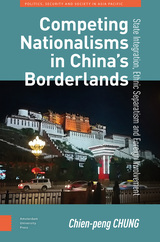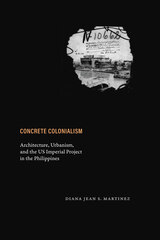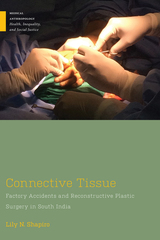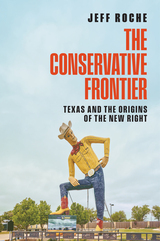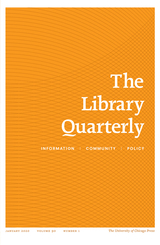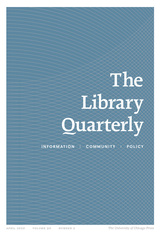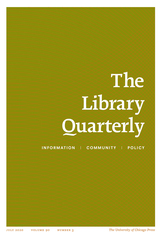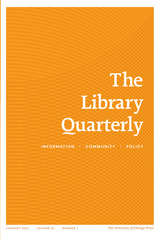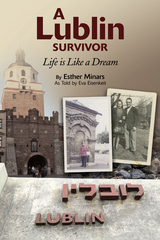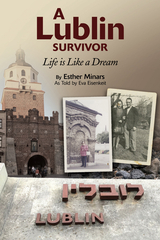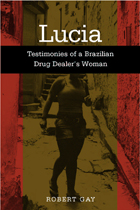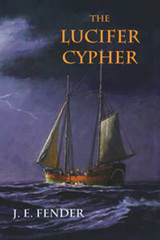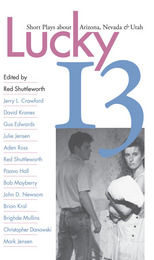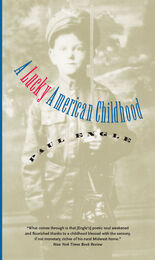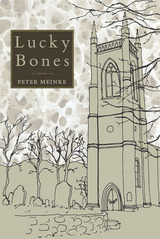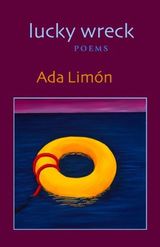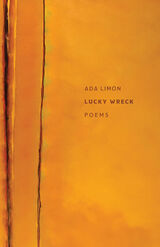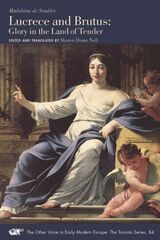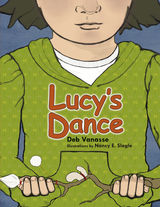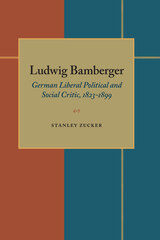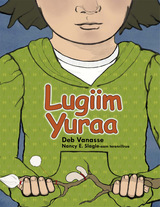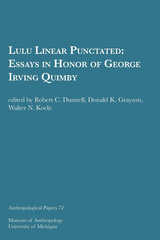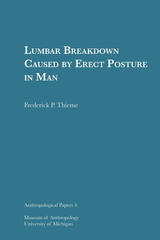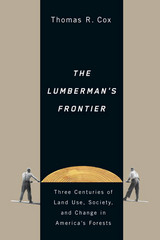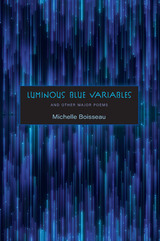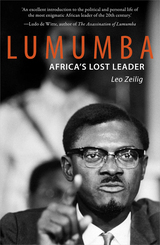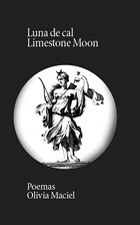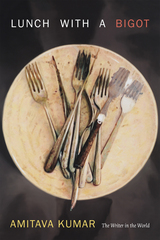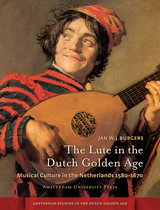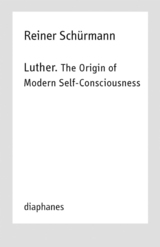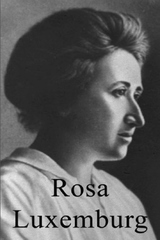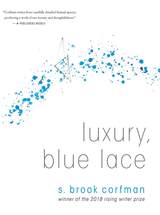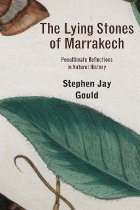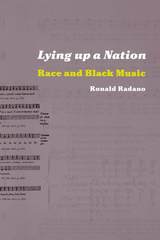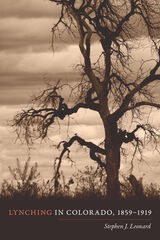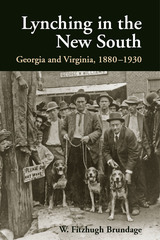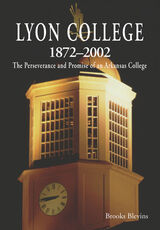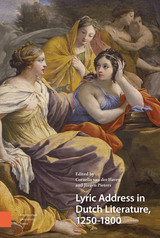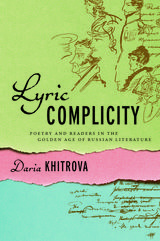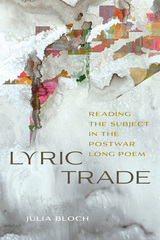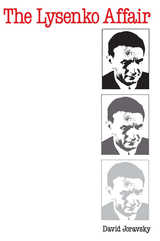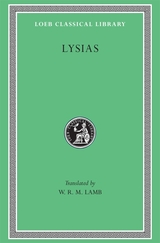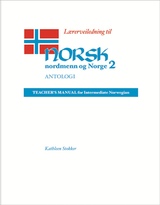LQ vol 89 num 3
The University of Chicago Press
University of Chicago Press Journals, 2019
LQ vol 89 num 4
The University of Chicago Press
University of Chicago Press Journals, 2019
LQ vol 90 num 1
The University of Chicago Press
University of Chicago Press Journals, 2020
LQ vol 90 num 2
The University of Chicago Press
University of Chicago Press Journals, 2020
LQ vol 90 num 3
The University of Chicago Press
University of Chicago Press Journals, 2020
LQ vol 90 num 4
The University of Chicago Press
University of Chicago Press Journals, 2020
LQ vol 91 num 1
The University of Chicago Press
University of Chicago Press Journals, 2021
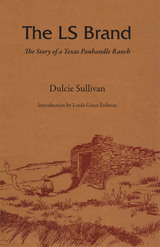 The LS Brand: The Story of a Texas Panhandle Ranch
By Dulcie Sullivan; Introduction by Loula Grace Erdman.
University of Texas Press, 1968 In the spring of 1881, W. M. D. Lee and Lucien B. Scott, wealthy businessmen of Leavenworth, Kansas, purchased land in the upper Texas Panhandle to establish the Lee-Scott Cattle Company. Their range sprawled across four Texas counties and extended into eastern New Mexico. About six months later, fifty thousand head of mixed cattle, branded LS, grazed those thousands of acres of free grass. This book is the story of Lee and Scott’s LS Ranch from the tempestuous years of the open range to the era of “bob wire.” It is also the story of the pioneer men and women whose efforts developed the LS into a cattle empire: W. M. D. and Lena Lee, Lucien and Julia Scott, “Mister Mac” and “Miss Annie” McAllister, and Charles and Pauline Whitman. Here are accounts of chuck wagons and wagon bosses; prairie fires, blizzards, and bog holes; ranch management problems and cowboys on strike; lobo wolves and romance; wild sprees in Tascosa and its “Hogtown” sector; LS cowboys fighting against a gang of organized rustlers in a feud that ended in tragedy; and those same cowboys on the long trails to Dodge City and Montana. Drawing upon stories told to her by men and women who were with the LS during the 1880’s and later years, Dulcie Sullivan presents her narrative in a clear, straightforward, but sympathetic manner that gives the reader a vivid sense of how life was really lived there in those times. Especially telling is her occasional use of an almost poetic incident: the steers bedding down around a campfire to listen to the chuck-wagon cook play his fiddle, or the suit of Spanish armor found in a spring, or the hail-battered trees attempting to renew themselves, despite their grotesque shapes.
LTR 58(1): Library Engagement Platforms
David Lee King
American Library Association, 2022 This issue of Library Technology Reports (vol. 58, no. 1), “Library Engagement Platforms,” introduces library engagement platforms, explains what types of interactions take place while using them, and illustrates why libraries need to utilize them to connect with their customers. These interactions take place using a variety of communication channels, including e-mail, text messages, and mobile phone notifications. The end goal of a library engagement platform isn’t the messaging; it’s engaging with that customer and moving them to respond and interact, or engage, with the library.
Lu Xun and World Literature
Edited by Xiaolu Ma and Carlos Rojas
Hong Kong University Press, 2025 Impressive and significant contributions to Lu Xun scholarship and world literature.
In Lu Xun and World Literature, the contributors examine various aspects of Lu Xun, who is known as the father of modern Chinese literature. Essays in this book focus on Lu Xun’s works in relation to the notions of world literature and processes of literary worlding. They offer detailed analyses of Lu Xun’s own literary oeuvre and of foreign works that engage with his writings. This volume also focuses on many facets of the publication and dissemination of Lu Xun’s works, from printing and binding to the discussions and debates that followed their release in China and abroad. This book not only makes an important contribution to the field of Lu Xun studies, but also proposes a reexamination of the category of world literature.
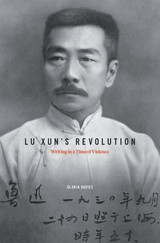 Lu Xun's Revolution: Writing in a Time of Violence
Gloria Davies
Harvard University Press, 2013 Widely recognized as modern China’s preeminent man of letters, Lu Xun (1881–1936) is revered as the voice of a nation’s conscience, a writer comparable to Shakespeare and Tolstoy in stature and influence. Gloria Davies’s portrait now gives readers a better sense of this influential author by situating the man Mao Zedong hailed as “the sage of modern China” in his turbulent time and place.
In Davies’s vivid rendering, we encounter a writer passionately engaged with the heady arguments and intrigues of a country on the eve of revolution. She traces political tensions in Lu Xun’s works which reflect the larger conflict in modern Chinese thought between egalitarian and authoritarian impulses. During the last phase of Lu Xun’s career, the so-called “years on the left,” we see how fiercely he defended a literature in which the people would speak for themselves, and we come to understand why Lu Xun continues to inspire the debates shaping China today.
Although Lu Xun was never a Communist, his legacy was fully enlisted to support the Party in the decades following his death. Far from the apologist of political violence portrayed by Maoist interpreters, however, Lu Xun emerges here as an energetic opponent of despotism, a humanist for whom empathy, not ideological zeal, was the key to achieving revolutionary ends. Limned with precision and insight, Lu Xun’s Revolution is a major contribution to the ongoing reappraisal of this foundational figure.
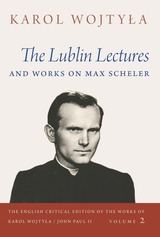 The Lublin Lectures and Works on Max Scheler
Karol Wojtyla
Catholic University of America Press, 2023 The Catholic University of America Press is honored to publish the English Critical Edition of the Works of Karol Wojtyła/John Paul II. Under the auspices of an international editorial board, the English Critical Edition will comprise more than 20 volumes, covering all of John Paul’s writings and correspondence in the years before and during his papacy.
This collection is essential for several reasons. For one thing, gaining access to the saint’s writings has posed a significant challenge. Except for official papal addresses and documents preserved and disseminated by the Vatican, St. John Paul’s works have been scattered and limited. Many documents need a new translation. Finally, English-language audiences have faced the challenge, even in the case of published texts of dealing with several languages, various translations, and textual idiosyncrasies.
The second volume of the series presents Wojtyła’s lectures at the Catholic University of Lublin and his works on Max Scheler. This volume consists of three parts: Karol Wojtyła’s lectures at the Lublin University from 1954 to 1957 (during three academic years); Wojtyła’s articles related to the ethical issues discussed in the Lublin lectures, and his habilitation thesis on Max Scheler from 1953 with other essays related more closely to Scheler’s thought.
As was the case with Volume 1, Volume 2 also relies on the original manuscripts and typescripts of Wojtyła’s works. These original texts were compared with the Polish published editions, and the significant differences between them were marked in the scholarly apparatus. Some of the essays in this volume were never published in English, others were never published before.
A Lublin Survivor: Life is Like a Dream
Esther Minars
Sussex Academic Press, 2022 Eva Szeks memoir describes the Nazi onslaught against Jews in her beloved city of Lublin in Poland, an important center of Jewish religion and culture. Eva recounts her fearless fight not to fall into German hands and to save her family. Her experiences under German occupation, her struggle to survive and her subsequent liberation is an historical account of the tragedy of a Jewish community destroyed. Eva asked her daughter Esther to take down her life story. A Lublin Survivor: Life is Like a Dream; provides an extraordinarily complete and descriptive picture of life in prewar and liberated Lublin.
A Lublin Survivor: Life is Like a Dream
Esther Minars
Sussex Academic Press, 2022 Eva Szeks memoir describes the Nazi onslaught against Jews in her beloved city of Lublin in Poland, an important center of Jewish religion and culture. Eva recounts her fearless fight not to fall into German hands and to save her family. Her experiences under German occupation, her struggle to survive and her subsequent liberation is an historical account of the tragedy of a Jewish community destroyed. Eva asked her daughter Esther to take down her life story. A Lublin Survivor: Life is Like a Dream; provides an extraordinarily complete and descriptive picture of life in prewar and liberated Lublin.
 The Lucca Choirbook: Lucca, Archivio di Stato, MS 238; Lucca, Archivio Arcivescovile, MS 97; Pisa, Archivo Arcivescovile, Biblioteca Maffi, Cartella 11/III
Edited and with an Introduction and Inventory by Reinhard Strohm
University of Chicago Press, 2009 More than forty years ago in the state archives of Lucca, Italy, musicologist Reinhard Strohm noticed that bindings on some of the books were unusual: they consisted of the pages of a centuries-old music manuscript. In the following years, Strohm worked with the archivists to remove these leaves and reassemble as much as possible of the original manuscript, a major cultural recovery now known as The Lucca Choirbook.
The recovered volume comprises what remains of a gigantic cathedral codex commissioned in Bruges around 1463 and containing English, Franco-Flemish, and Italian sacred music of the fifteenth century—including works by the celebrated composers Guillaume Du Fay and Henricus Isaac.
This facsimile of the choirbook includes all the known leaves, ordered according to their proper placement in the original codex. In the introduction, Strohm tells the fascinating story of this choirbook, identifying its early users and reconstructing its travel from Bruges to Lucca.
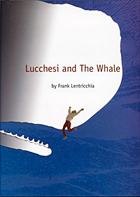 Lucchesi and The Whale
Frank Lentricchia
Duke University Press, 2001 Lucchesi and The Whale is an unusual work of fiction by noted author and critic Frank Lentricchia. Its central character, Thomas Lucchesi Jr., is a college professor in the American heartland whose obsessions and compulsions include traveling to visit friends in their last moments of life—because grief alone inspires him to write—and searching for secret meaning in Herman Melville’s Moby-Dick. Himself a writer of “stories full of violence in a poetic style,” Lucchesi tells his students that he teaches “only because [his] fiction is commercially untouchable” and to “never forget that.” Austerely isolated, anxiety-ridden, and relentlessly self-involved, Lucchesi nonetheless cannot completely squelch his eagerness for love.
Having become “a mad Ahab of reading,” who is driven to dissect the “artificial body of Melville’s behemothian book” to grasp its truth, Lucchesi allows his thoughts to wander and loop from theory to dream to reality to questionable memory. But his black humor-tinged musings are often as profoundly moving as they are intellectual, such as the section in which he ponders the life and philosophy of Ludwig Wittgenstein in relation to the significance of a name—and then attempts to share these thoughts with a sexy, middle-aged flight attendant—or another in which he describes a chance meeting with a similarly-named mafia don.
Despite apparent spiritual emptiness, Lucchesi in the end does find “a secret meaning” to Moby-Dick. And Lentricchia’s creations—both Lucchesi and The Whale and its main character—reveal this meaning through a series of ingeniously self-reflective metaphors, in much the way that Melville himself did in and through Moby-Dick. Vivid, humorous, and of unparalleled originality, this new work from Frank Lentricchia will inspire and console all who love and ponder both great literature and those who would write it.
Lucia: Testimonies Of A Brazilian
Robert Gay
Temple University Press, 2005 Favelas, or shantytowns, are where cocaine is mainly sold in Rio de Janeiro. There are some six hundred favelas in the city, and most of them are controlled by well-organized and heavily armed drug gangs. The struggle for the massive profits from this drug trade has resulted in what are increasingly violent and deadly confrontations between rival drug gangs and a corrupt and brutal police force, that have transformed parts of the city into a war-zone. Lucia tells the story of one woman who was once intimately involved with drug gang life in Rio throughout the 1990s. Through a series of conversations with the author, Lucia describes conditions of poverty, violence, and injustice that are simply unimaginable to outsiders. In doing so, she explains why women like her become involved with drugs and gangs, and why this situation is unlikely to change.
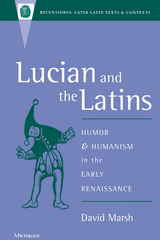 Lucian and the Latins: Humor and Humanism in the Early Renaissance
David Marsh
University of Michigan Press, 1998 The works of the second-century Greek satirist Lucian enjoyed a tremendous vogue in the early Renaissance. His Greek prose furnished one of the first texts in the Florentine classroom around 1400, and it aroused as much interest as Plato. At first praised as an eloquent rhetorician, Lucian was soon appreciated for his irreverent wit, which inspired new satirical and paradoxical currents in Renaissance literature.
Until now, no study has attempted to connect the Latin translators and imitators of Lucian with his wider European influence. In Lucian and the Latins, David Marsh describes how Renaissance authors rediscovered the comic writings of Lucian. He traces how Lucianic themes and structures made an essential contribution to European literature beginning with a survey of Latin translations and imitations, which gave new direction to European letters in the fifteenth and sixteenth centuries. The Lucianic dialogues of the dead and dialogues of the gods were immensely popular, despite the religious backlash of the sixteenth century. The paradoxical encomium, represented by Lucian's "The Fly" and "The Parasite," inspired so-called serious humanists like Leonardo Bruni and Guarino of Verona. Lucian's "True Story" initiated the genre of the fantastic journey, which enjoyed considerable popularity during the Renaissance age of discovery. Humanist descendants of this work include Thomas More's Utopia and much of Rabelais' Pantagruel.
Lucian and the Latins will attract readers interested in a wide variety of subjects: the classical tradition, the early Italian Renaissance, the origins of modern European literature, and the uses of humor and satire as instruments of cultural critique.
David Marsh is Professor of Italian, Rutgers University.
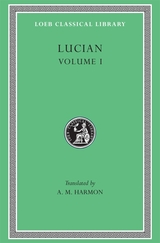 Lucian, Volume I: Phalaris. Hippias or The Bath. Dionysus. Heracles. Amber or The Swans. The Fly. Nigrinus. Demonax. The Hall. My Native Land. Octogenarians. A True Story. Slander. The Consonants at Law. The Carousal (Symposium) or The Lapiths
Lucian
Harvard University Press Antiquity’s satirist supreme.
Lucian (ca. AD 120–190), the satirist from Samosata on the Euphrates, started as an apprentice sculptor, turned to rhetoric and visited Italy and Gaul as a successful traveling lecturer before settling in Athens and developing his original brand of satire. Late in life he fell on hard times and accepted an official post in Egypt.
Although notable for the Attic purity and elegance of his Greek and his literary versatility, Lucian is chiefly famed for the lively, cynical wit of the humorous dialogues in which he satirizes human folly, superstition, and hypocrisy. His aim was to amuse rather than to instruct. Among his best works are A True Story (the tallest of tall tales about a voyage to the moon), Dialogues of the Gods (a “reductio ad absurdum” of traditional mythology), Dialogues of the Dead (on the vanity of human wishes), Philosophies for Sale (great philosophers of the past are auctioned off as slaves), The Fisherman (the degeneracy of modern philosophers), The Carousal or Symposium (philosophers misbehave at a party), Timon (the problems of being rich), Twice Accused (Lucian’s defense of his literary career) and (if by Lucian) The Ass (the amusing adventures of a man who is turned into an ass).
The Loeb Classical Library edition of Lucian is in eight volumes.
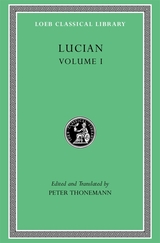 Lucian, Volume I: Phalaris I–II. Hippias. Dionysus. Heracles. On Amber. The Fly. Nigrinus. Demonax. On the Hall. Encomium of the Fatherland. The Long-Lived. True Stories I–II. Slander. Lawsuit of the Consonants. Symposium
Lucian
Harvard University Press Antiquity’s satirist supreme.
Lucian of Samosata on the Euphrates (fl. AD 160–190) ranks among the most dazzlingly creative, virtuosic, and boldly original writers of antiquity. Although he more than once characterizes his writings, many of them intended for public performance, as a combination of dialogue and comedy, in truth the diversity of his extant works is startling, ranging from philosophic and moral dialogue to invective, from mythology to contemporary biography to high fantasy, from mock encomium to Herodotean ethnography, and from generic combinations to unclassifiable novelties, all infused with ebullient wit, elegant humor, and refined satire, and all delivered in sparkling style.
Included in the Loeb edition of Lucian are all of his approximately seventy-five authentic works together with those doubtfully attributed. Among the highlights of Volume I are True Stories, an early science-fiction account of a voyage to the moon, and Symposium, a rollicking dinner conversation among Stoic, Epicurean, Peripatetic, and Cynic philosophers.
This edition, which replaces the original Loeb edition by A. M. Harmon (1913), offers text, translation, and annotation that are fully current with modern scholarship.
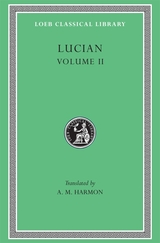 Lucian, Volume II: The Downward Journey or The Tyrant. Zeus Catechized. Zeus Rants. The Dream or The Cock. Prometheus. Icaromenippus or The Sky-man. Timon or The Misanthrope. Charon or The Inspectors. Philosophies for Sale
Lucian
Harvard University Press Antiquity’s satirist supreme.
Lucian (ca. AD 120–190), the satirist from Samosata on the Euphrates, started as an apprentice sculptor, turned to rhetoric and visited Italy and Gaul as a successful traveling lecturer before settling in Athens and developing his original brand of satire. Late in life he fell on hard times and accepted an official post in Egypt.
Although notable for the Attic purity and elegance of his Greek and his literary versatility, Lucian is chiefly famed for the lively, cynical wit of the humorous dialogues in which he satirizes human folly, superstition, and hypocrisy. His aim was to amuse rather than to instruct. Among his best works are A True Story (the tallest of tall tales about a voyage to the moon), Dialogues of the Gods (a “reductio ad absurdum” of traditional mythology), Dialogues of the Dead (on the vanity of human wishes), Philosophies for Sale (great philosophers of the past are auctioned off as slaves), The Fisherman (the degeneracy of modern philosophers), The Carousal or Symposium (philosophers misbehave at a party), Timon (the problems of being rich), Twice Accused (Lucian’s defense of his literary career) and (if by Lucian) The Ass (the amusing adventures of a man who is turned into an ass).
The Loeb Classical Library edition of Lucian is in eight volumes.
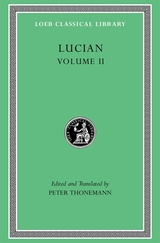 Lucian, Volume II: The Downward Journey. Zeus Refuted. The Tragic Zeus. The Rooster. Prometheus. Icaromenippus. Timon. Charon. Sale of Lives
Lucian
Harvard University Press Antiquity’s satirist supreme.
Lucian of Samosata on the Euphrates (fl. AD 160–190) ranks among the most dazzlingly creative, virtuosic, and boldly original writers of antiquity. Although he more than once characterizes his writings, many of them intended for public performance, as a combination of dialogue and comedy, in truth the diversity of his extant works is startling, ranging from philosophic and moral dialogue to invective, from mythology to contemporary biography to high fantasy, from mock encomium to Herodotean ethnography, and from generic combinations to unclassifiable novelties, all infused with ebullient wit, elegant humor, and refined satire, and all delivered in sparkling style.
Included in the Loeb edition of Lucian are all of his approximately seventy-five authentic works together with those doubtfully attributed. Highlights of Volume II include The Downward Journey, a voyage to the underworld; Timon, on the problems of being a rich misanthrope; and Sale of Lives, in which great philosophers of the past are auctioned off as slaves.
This edition, which replaces the original Loeb edition by A. M. Harmon (1915), offers text, translation, and annotation that are fully current with modern scholarship.
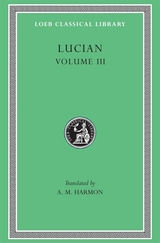 Lucian, Volume III: The Dead Come to Life or The Fisherman. The Double Indictment or Trials by Jury. On Sacrifices. The Ignorant Book Collector. The Dream or Lucian’s Career. The Parasite. The Lover of Lies. The Judgement of the Goddesses. On Salaried Posts in Great Houses
Lucian
Harvard University Press, 2004 Antiquity’s satirist supreme.
Lucian (ca. AD 120–190), the satirist from Samosata on the Euphrates, started as an apprentice sculptor, turned to rhetoric and visited Italy and Gaul as a successful traveling lecturer before settling in Athens and developing his original brand of satire. Late in life he fell on hard times and accepted an official post in Egypt.
Although notable for the Attic purity and elegance of his Greek and his literary versatility, Lucian is chiefly famed for the lively, cynical wit of the humorous dialogues in which he satirizes human folly, superstition, and hypocrisy. His aim was to amuse rather than to instruct. Among his best works are A True Story (the tallest of tall tales about a voyage to the moon), Dialogues of the Gods (a “reductio ad absurdum” of traditional mythology), Dialogues of the Dead (on the vanity of human wishes), Philosophies for Sale (great philosophers of the past are auctioned off as slaves), The Fisherman (the degeneracy of modern philosophers), The Carousal or Symposium (philosophers misbehave at a party), Timon (the problems of being rich), Twice Accused (Lucian’s defense of his literary career) and (if by Lucian) The Ass (the amusing adventures of a man who is turned into an ass).
The Loeb Classical Library edition of Lucian is in eight volumes.
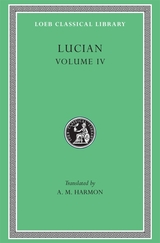 Lucian, Volume IV: Anacharsis or Athletics. Menippus or The Descent into Hades. On Funerals. A Professor of Public Speaking. Alexander the False Prophet. Essays in Portraiture. Essays in Portraiture Defended. The Goddesse of Surrye
Lucian
Harvard University Press Antiquity’s satirist supreme.
Lucian (ca. AD 120–190), the satirist from Samosata on the Euphrates, started as an apprentice sculptor, turned to rhetoric and visited Italy and Gaul as a successful traveling lecturer before settling in Athens and developing his original brand of satire. Late in life he fell on hard times and accepted an official post in Egypt.
Although notable for the Attic purity and elegance of his Greek and his literary versatility, Lucian is chiefly famed for the lively, cynical wit of the humorous dialogues in which he satirizes human folly, superstition, and hypocrisy. His aim was to amuse rather than to instruct. Among his best works are A True Story (the tallest of tall tales about a voyage to the moon), Dialogues of the Gods (a “reductio ad absurdum” of traditional mythology), Dialogues of the Dead (on the vanity of human wishes), Philosophies for Sale (great philosophers of the past are auctioned off as slaves), The Fisherman (the degeneracy of modern philosophers), The Carousal or Symposium (philosophers misbehave at a party), Timon (the problems of being rich), Twice Accused (Lucian’s defense of his literary career) and (if by Lucian) The Ass (the amusing adventures of a man who is turned into an ass).
The Loeb Classical Library edition of Lucian is in eight volumes.
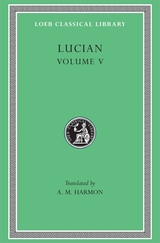 Lucian, Volume V: The Passing of Peregrinus. The Runaways. Toxaris or Friendship. The Dance. Lexiphanes. The Eunuch. Astrology. The Mistaken Critic. The Parliament of the Gods. The Tyrannicide. Disowned
Lucian
Harvard University Press Antiquity’s satirist supreme.
Lucian (ca. AD 120–190), the satirist from Samosata on the Euphrates, started as an apprentice sculptor, turned to rhetoric and visited Italy and Gaul as a successful traveling lecturer before settling in Athens and developing his original brand of satire. Late in life he fell on hard times and accepted an official post in Egypt.
Although notable for the Attic purity and elegance of his Greek and his literary versatility, Lucian is chiefly famed for the lively, cynical wit of the humorous dialogues in which he satirizes human folly, superstition, and hypocrisy. His aim was to amuse rather than to instruct. Among his best works are A True Story (the tallest of tall tales about a voyage to the moon), Dialogues of the Gods (a “reductio ad absurdum” of traditional mythology), Dialogues of the Dead (on the vanity of human wishes), Philosophies for Sale (great philosophers of the past are auctioned off as slaves), The Fisherman (the degeneracy of modern philosophers), The Carousal or Symposium (philosophers misbehave at a party), Timon (the problems of being rich), Twice Accused (Lucian’s defense of his literary career) and (if by Lucian) The Ass (the amusing adventures of a man who is turned into an ass).
The Loeb Classical Library edition of Lucian is in eight volumes.
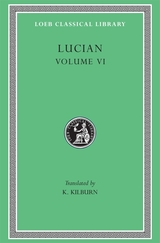 Lucian, Volume VI: How to Write History. The Dipsads. Saturnalia. Herodotus or Aetion. Zeuxis or Antiochus. A Slip of the Tongue in Greeting. Apology for the “Salaried Posts in Great Houses.” Harmonides. A Conversation with Hesiod. The Scythian or The Consul. Hermotimus
Lucian
Harvard University Press Antiquity’s satirist supreme.
Lucian (ca. AD 120–190), the satirist from Samosata on the Euphrates, started as an apprentice sculptor, turned to rhetoric and visited Italy and Gaul as a successful traveling lecturer before settling in Athens and developing his original brand of satire. Late in life he fell on hard times and accepted an official post in Egypt.
Although notable for the Attic purity and elegance of his Greek and his literary versatility, Lucian is chiefly famed for the lively, cynical wit of the humorous dialogues in which he satirizes human folly, superstition, and hypocrisy. His aim was to amuse rather than to instruct. Among his best works are A True Story (the tallest of tall tales about a voyage to the moon), Dialogues of the Gods (a “reductio ad absurdum” of traditional mythology), Dialogues of the Dead (on the vanity of human wishes), Philosophies for Sale (great philosophers of the past are auctioned off as slaves), The Fisherman (the degeneracy of modern philosophers), The Carousal or Symposium (philosophers misbehave at a party), Timon (the problems of being rich), Twice Accused (Lucian’s defense of his literary career) and (if by Lucian) The Ass (the amusing adventures of a man who is turned into an ass).
The Loeb Classical Library edition of Lucian is in eight volumes.
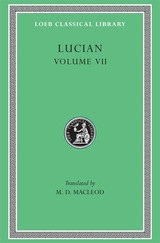 Lucian, Volume VII: Dialogues of the Dead. Dialogues of the Sea-Gods. Dialogues of the Gods. Dialogues of the Courtesans
Lucian
Harvard University Press Antiquity’s satirist supreme.
Lucian (ca. AD 120–190), the satirist from Samosata on the Euphrates, started as an apprentice sculptor, turned to rhetoric and visited Italy and Gaul as a successful traveling lecturer before settling in Athens and developing his original brand of satire. Late in life he fell on hard times and accepted an official post in Egypt.
Although notable for the Attic purity and elegance of his Greek and his literary versatility, Lucian is chiefly famed for the lively, cynical wit of the humorous dialogues in which he satirizes human folly, superstition, and hypocrisy. His aim was to amuse rather than to instruct. Among his best works are A True Story (the tallest of tall tales about a voyage to the moon), Dialogues of the Gods (a “reductio ad absurdum” of traditional mythology), Dialogues of the Dead (on the vanity of human wishes), Philosophies for Sale (great philosophers of the past are auctioned off as slaves), The Fisherman (the degeneracy of modern philosophers), The Carousal or Symposium (philosophers misbehave at a party), Timon (the problems of being rich), Twice Accused (Lucian’s defense of his literary career) and (if by Lucian) The Ass (the amusing adventures of a man who is turned into an ass).
The Loeb Classical Library edition of Lucian is in eight volumes.
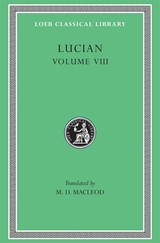 Lucian, Volume VIII: Soloecista. Lucius or The Ass. Amores. Halcyon. Demosthenes. Podagra. Ocypus. Cyniscus. Philopatris. Charidemus. Nero
Lucian
Harvard University Press Antiquity’s satirist supreme.
Lucian (ca. AD 120–190), the satirist from Samosata on the Euphrates, started as an apprentice sculptor, turned to rhetoric and visited Italy and Gaul as a successful traveling lecturer before settling in Athens and developing his original brand of satire. Late in life he fell on hard times and accepted an official post in Egypt.
Although notable for the Attic purity and elegance of his Greek and his literary versatility, Lucian is chiefly famed for the lively, cynical wit of the humorous dialogues in which he satirizes human folly, superstition, and hypocrisy. His aim was to amuse rather than to instruct. Among his best works are A True Story (the tallest of tall tales about a voyage to the moon), Dialogues of the Gods (a “reductio ad absurdum” of traditional mythology), Dialogues of the Dead (on the vanity of human wishes), Philosophies for Sale (great philosophers of the past are auctioned off as slaves), The Fisherman (the degeneracy of modern philosophers), The Carousal or Symposium (philosophers misbehave at a party), Timon (the problems of being rich), Twice Accused (Lucian’s defense of his literary career) and (if by Lucian) The Ass (the amusing adventures of a man who is turned into an ass).
The Loeb Classical Library edition of Lucian is in eight volumes.
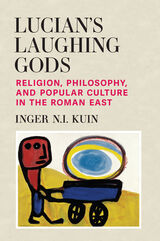 Lucian’s Laughing Gods: Religion, Philosophy, and Popular Culture in the Roman East
Inger N.I. Kuin
University of Michigan Press, 2023 No comic author from the ancient world features the gods as often as Lucian of Samosata, yet the meaning of his works remain contested. He is either seen as undermining the gods and criticizing religion through his humor, or as not engaging with religion at all, featuring the gods as literary characters. His humor was traditionally viewed as a symptom of decreased religiosity, but that model of religious decline in the second century CE has been invalidated by ancient historians. Understanding these works now requires understanding what it means to imagine as laughing and laughable gods who are worshipped in everyday cult.
In Lucian's Laughing Gods, author Inger N. I. Kuin argues that in ancient Greek thought, comedic depictions of divinities were not necessarily desacralizing. In religion, laughter was accommodated to such an extent as to actually be constituent of some ritual practices, and the gods were imagined either to reciprocate or push back against human laughter—they were never deflated by it. Lucian uses the gods as comic characters, but in doing so, he does not automatically negate their power. Instead, with his depiction of the gods and of how they relate to humans—frivolous, insecure, callous—Lucian challenges the dominant theologies of his day as he refuses to interpret the gods as ethical models. This book contextualizes Lucian’s comedic performances in the intellectual life of the second century CE Roman East broadly, including philosophy, early Christian thought, and popular culture (dance, fables, standard jokes, etc.). His texts are analyzed as providing a window onto non-elite attitudes and experiences, and methodologies from religious studies and the sociology of religion are used to conceptualize Lucian’s engagement with the religiosity of his contemporaries.
The Lucidarium of Marchetto of Padua: A Critical Edition, Translation, and Commentary
Edited by Jan W. Herlinger
University of Chicago Press, 1985 "Herlinger deserves the thanks of the scholarly community for having prepared both edition and translation with the most meticulous of critical methods and the greatest of care."—Leeman L. Perkins, Renaissance Quarterly
"An almost archetypal example of unpretentious and honest scholarship."—Alejandro Enrique Planchart, Journal of the American Musicological Society
The Lucifer Cypher
J. E. Fender
University Press of New England, 2012 Geoffrey Frost, American sea captain and veteran of the China Trade, and Ming Tsun, his enigmatic mute friend, return in this latest installment of the highly literate and compelling saga of the American struggle for independence at sea. After a clash against well-armed British warships, Frost’s ship, the privateer Audacity, must be laid up for repairs. Frost, however, is not the kind of man to sit idle for long, and when a new secret weapon invented by David Bushnell comes to light, he recognizes a rare opportunity to strike hard at the complacent English. Commanding the prototype submarine Narwhal, Frost and the freed slave Darius set out to bring terror from below, all the while narrowly avoiding sinking and certain death in the cast iron tomb. J. E. Fender proves in this harrowing novel of power and suspense why he is quickly distinguishing himself as one of the eminent voices of American historical fiction.
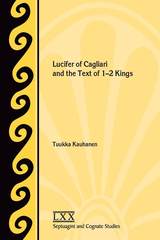 Lucifer of Cagliari and the Text of 1-2 Kings
Tuukka Kauhanen
SBL Press, 2018 The most up-to-date study of the text history of 1 and 2 Kings
In this book, Tuukka Kauhanen approaches the challenging case of the textual history of 1 and 2 Kings through citations of the text found within the writings of the fourth-century bishop of Sadinia, Lucifer of Cagliari. Kauhanen presents evidence that Lucifer's Latin text sheds important light on lost Hebrew and Greek pieces of the textual puzzle in Kings. In doing so, he compares all of Lucifer's extensive quotations of Kings to extant Greek witnesses as well as Old Latin witnesses where available and subsequently analyzes the probable reasons for textual variations. In each instance he attempts to choose the best possible candidate for the Old Greek reading and where that reading might reflect a now-lost Hebrew text.
Features
- Use of the most current research into the text of the Hebrew Bible and the Septuagint, including the Hebrew Bible: A Critical Edition series and the forthcoming Göttingen Septuagint edition of King
- An appendix listing readings from the analysis sections arranged according to agreement patterns and other meaningful criteria
- Charts comparing readings
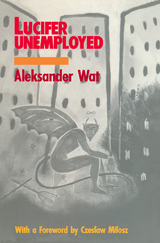 Lucifer Unemployed
Aleksander Wat
Northwestern University Press, 1990 In these nine stories the Polish writer Aleksander Wat consistently turns history on its ear in comic reversals reverberating with futurist rhythms and the gently mocking humor of despair. Wat inverts the conventions of religion, politics, and culture to fantastic effect, illuminating the anarchic conditions of existence in interwar Europe.
The title story finds a superbly ironic Lucifer wandering the Europe of the late 1920s in search of a mission: what impact can a devil have in a godless time? What is his sorcery in a society far more diablical than the devil himself? Too idealistic for a world full of modern cruelties, the unemployable Lucifer finally finds the only means of guaranteed immortality. In "The Eternally Wandering Jew," steady Jewish conversion to Christianity results in Nathan the Talmudist reigning as Pope Urban IX. The hilarious satire on power, "Kings in Exile," unfolds with the dethroned monarchs of Europe meeting to found their own republic in an uninhabited island in the Indian Ocean.
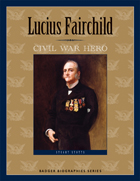 Lucius Fairchild: Civil War Hero
Stuart Stotts
Wisconsin Historical Society Press, 2010 Lucius Fairchild: Civil War Hero introduces young readers to a great Wisconsin soldier-statesman. From panning for gold, to losing an arm during a Civil War battle, to campaigning hard for elections, Lucius learned early that it takes courage and persistence to succeed. Lucius's life brimmed with adventure. As a young man, he headed west across sprawling prairies and high mountains to seek his fortune in California's gold mines. Finding little gold, Lucius tried his hand as a beef supplier and made his money there. When volunteers were needed to fight in the Civil War, Lucius proclaimed, "no one can take a clatter at that . . . more easily than I can." Lucius grieved over the loss of his men of the Iron Brigade in battles like that of Brawner's Farm, and his own left arm was shattered at Gettysburg. With the glow of a returning hero, Lucius went on to win three terms as governor of Wisconsin, and then to secure diplomatic posts in Europe. Yet, even as Lucius advanced his own career, he (like his contemporary Cordelia Harvey) never forgot the importance of serving others. As governor and first lady, Lucius and his wife, Frances, swiftly came to the aid of Peshtigo Fire victims. And as commander-in-chief of the Grand Army of the Republic, he made helping veterans top priority. Sidebars on the California Gold Rush, military rank, Free States and Slave States, the Iron Brigade, and the Gettysburg Address complement this history-rich biography.
 The Luck of Barry Lyndon: A Romance of the Last Century. By Fitz-Boodle.
William Makepeace Thackeray
University of Michigan Press, 1999 The Thackeray Edition proudly announces two additions to its collection: Catherine and The Luck of Barry Lyndon. The Thackeray Edition is the first full-scale scholarly edition of William Makepeace Thackeray's works to appear in over seventy years, and the only one ever to be based on an examination of manuscripts and relevant printed texts. It is also a concrete attempt to put into practice a theory of scholarly editing that gives new insight into Thackeray's own compositional process. The Luck of Barry Lyndon, serialized in Fraser's Magazine in 1844, is a wonderfully hard-edged advance upon Thackeray's previous writing: a tour de force dramatization at novelistic length of the moral vacuity of its first person narrator. The inner workings of this narrator are far more complicated than in earlier Thackeray writings, and are presented in a far more subtle, yet not humorless, manner. The mock-Bildungsroman aspect of the novel is brought about by the non-enlightenment of the title-figure, his failure to find a meaningful love-relationship, and his inability to discover a calling that identifies both a significant direction for his individual existence and, at the same time, an appropriate accommodation to his duties to society. Achieved in brilliant, accomplished style, Barry Lyndon is a significant and progressive experiment in narration for Thackeray.
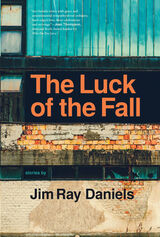 The Luck of the Fall
Jim Ray Daniels
Michigan State University Press, 2023 In The Luck of the Fall, characters get lost; they fall, but the falls shape their lives in ways that might even be called “lucky”—if luck is defined as survival, despite the scars left behind. They take consolation in their lack of prizes, in the clarity of their failures, while approaching the future with gallows humor and faith in cynicism. Some stories read like dramatic monologues in the longer play of lives along Eight Mile Road on the edge of Detroit, a landmark location throughout Daniels’s six other fiction collections. Among the looming hulks of abandoned factories, near-nihilistic lives struggle in the absence of the comforting shadows those factories provided. Some keep score, some don’t, as they search for validation, however brief, before the curtain comes down and anonymity returns. COVID shows up with its masked consequences, along with addiction, divorce, unwanted pregnancy, and mental illness. None of these characters fit in, but all are trying to keep from being squeezed out entirely. In The Luck of the Fall, the logic of the heart wins out, even as the characters are picking up the pieces of their broken lives, looking for something shiny called hope.
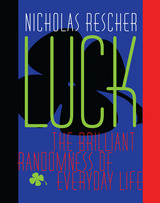 Luck: The Brilliant Randomness Of Everyday Life
Nicholas Rescher
University of Pittsburgh Press, 2001
Luck touches us all. "Why me?" we complain when things go wrong—though seldom when things go right. But although luck has a firm hold on all our lives, we seldom reflect on it in a cogent, concerted way.
In Luck, one of our most eminent philosophers offers a realistic view of the nature and operation of luck to help us come to sensible terms with life in a chaotic world. Differentiating luck from fate (inexorable destiny) and fortune (mere chance), Nicholas Rescher weaves a colorful tapestry of historical examples, from the use of lots in the Old and New Testaments to Thomas Gataker’s treatise of 1619 on the great English lottery of 1612, from casino gambling to playing the stock market. Because we are creatures of limited knowledge who do and must make decisions in the light of incomplete information, Rescher argues, we are inevitably at the mercy of luck. It behooves us to learn more about it.
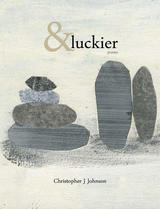 &luckier
Christopher J Johnson
University Press of Colorado, 2016 Published by the Center for Literary Publishing at Colorado State University
Mountain West Poetry Series
In his first collection of poems, &luckier, Christopher J Johnson explores the depths to which we can know our most intimate friends, habits, and—even more so—selves. From a mosaic of coffee cups, dinner engagements, razors, walks around his city, and the wider realm of nature, the poet continually asks to what degree our lives can be understood, our joys engaged with, and our sorrows mitigated. In a voice that is at once contemporary and yet almost primal, these poems seek an affinity with the natural world, the passing of history, and the deepness and breadth of ancestry; they do not question the mystery of life but ask rather how we have become separated from and might return to a more aware place within the frame of it. These are poems rich with metaphor and music but also direct in their voice. Johnson exhibits a poetic tradition that—rather than employing academic allusions and direct personal statements—remains elusive in its use of the poetic “I.” The reader is never certain if they are reading about the poet, their friends, or themselves.
Lucky 13: Short Plays about Arizona, Nevada, and Utah
Red Shuttleworth
University of Nevada Press, 1995 The nature of the Old and New West is fully reflected through dialects, beliefs, occupations, and actions in this collection of thirteen plays with complete stage directions. Set in Arizona, Nevada, and Utah from the mid-1800s to the present day and focusing on veterans, children, prostitutes, priests, the newborn, and newly dead, these one-acts written by playwrights who know the region give voice to those who created and continue to recreate the West. This collection of contemporary plays, written out of love and concern for the region, examines as never before the western myths rooted in the national psyche. The characters battle limits, deny fate, and seek new beginnings. The plays examine symptoms, pose questions, and seek answers about the past and present West.
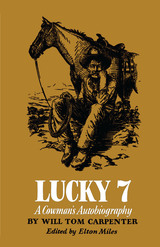 Lucky 7: A Cowman's Autobiography
By Will Tom Carpenter
University of Texas Press, 1957 "No. 7"—as Carpenter, the youngest of seven children, called himself—was born in Missouri in 1854 and moved west with his family, first to Kansas, then to the settlements near Pikes Peak, and finally, in 1872, to Texas with his elder brother. From the time he made his first cattle drive, he wanted no other life but that of herding longhorns across the free and flat grasslands of the West. His schooling was the trail, the campfire, the saddle. In 1900, after a full and active life, he retired to his own ranch west of the Pecos. As the years passed, he sadly watched the fences go up and the free range disappear. Thus this book came to be written from the longing memory of a time-stranded cowman. He tells his story in the hard-punching, gritty language, direct humor, and attachment to bald fact and frank opinion that characterize the true Westerner. Elton Miles has provided an introduction that fills in the details of Carpenter's life and completes a "vivid picture of the genuine old-time cowman," as Southwest Review observed.
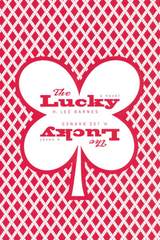 The Lucky: (A Novel)
H. Lee Barnes
University of Nevada Press, 2003 Unfolding from the bygone era of 1950s Las Vegas through the turbulent decades that followed, this epic novel examines the universal search for identity and reward in a world where the good life always seems out of reach. The streets of early Las Vegas are a tough place for a boy to grow up. Pete Elkins is fatherless, living in a cramped apartment with his mother, a party-girl with a penchant for falling in love with the wrong kind of man; and his older sister, who has grown up too fast from trying to parent both her brother and their reckless mother. Pete is headed for serious trouble when he is befriended by Willy Bobbins, a casino owner with a murky past and even murkier business practices. But Willy is also deeply compassionate and wise, and he soon becomes a surrogate father for the lonely Pete. Gradually, Pete becomes involved with Willy’s troubled family and comes to know both the scope of his mentor’s power and the depth of his vulnerabilities.
A Lucky American Childhood
Paul Engle
University of Iowa Press, 1996 More than any other individual, Paul Engle was the spirited force behind the creative writing workshops now so abundant in America. His indomitable nature, enthusiasm, and great persuasive powers, coupled with his distinguished reputation as a poet, loomed large behind the founding of the influential Iowa Writers' Workshop.
A Lucky American Childhood will appeal to people with memories of the small-town America that Paul Engle describes with such affectionate realism and to all those interested in the roots of this renowned man of letters.
Lucky Bones
Peter Meinke
University of Pittsburgh Press, 2014 In Lucky Bones, Peter Meinke moves fluidly through free and formal shapes, taking the reader on a tour through America in the 21st century: family, politics, love, war and peace, old age and death are looked at in ways that are surprising, clear, and warm-hearted. Lit by flashes of anger and laughter as he surveys his territory from the vantage point of old age, the poems are, in the end, both sane and profound, set to Meinke’s own music.
Consisting of over sixty new poems, the book begins with a house-shaped poem about a family in a beloved old home, and then moves out into the world with poems about a fire-bug, drive-by shootings, and the often violent human condition before circling back to the home and a final epitaph. A clear-eyed feeling of loss permeates Lucky Bones, but not despair: in the midst of conflict, Meinke’s world is full of wonder, and wonderful people.
Lucky Fish
Aimee Nezhukumatathil
Tupelo Press, 2011 Poetry. Asian American Studies. LUCKY FISH travels along a lush current—a confluence of leaping vocabulary and startling formal variety, with upwelling gratitude at its source: for love, motherhood, "new hope," and the fluid and rich possibilities of words themselves. With an exuberant appetite for "my morning song, my scurry-step, my dew," anchored in complicated human situations, this astounding young poet's third collection of poems is her strongest yet.
 Lucky Joe's Namesake: The Extraordinary Life and Observations of Joe Wilson
Fred Bartenstein
University of Tennessee Press, 2017 Joe Wilson (1938-2015), a native of rural East Tennessee, was a civil rights activist, self-educated scholar, founder/administrator of nationally important roots music enterprises, and was legendary for his colorful writing and opinions. Lucky Joe’s Namesake, a companion to Roots Music in America: Collected Writings of Joe Wilson (also published by the University of Tennessee Press), brings us Wilson’s life and observations, mostly in his own words.
From humble mountain beginnings, Wilson’s career progressed through Nashville, Tennessee; Birmingham, Alabama; and New York City, before settling him for twenty-eight years near the seats of power in Washington, D.C. as the executive director of the National Council for the Traditional Arts. In that role, he developed a national model for folk festival presentations, stalked the halls of federal representatives seeking support for traditional artists, and filled concert venues throughout the world with audiences eager to experience the work of master folk musicians. A powerful advocate on behalf of agrarian values, social justice, artistic authenticity, and cultural democracy, Joe wrote in an engaging, humorous, and memorable style.
This eclectic anthology is filled with Joe Wilson’s brilliant published writing for magazines, books, and newspapers as well as privately circulated unpublished works, including an extended autobiographical essay. Readers are sure to benefit from Wilson’s lessons and artful ruminations culled from a lifetime of devotion to music and cultural and social activism.
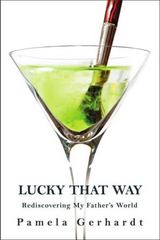 Lucky That Way: Rediscovering My Father's World
Pamela Gerhardt
University of Missouri Press, 2013 “I decide that from now on we should listen to him. His lip may be deflated and his left side paralyzed, but he knows. And he has made terrible mistakes. But he knows. He knows. We are lucky that way.” Lucky That Way, a nuanced, richly engaging memoir, chronicles the joys and tribulations of a daughter who rediscovers her father as he nears the end of his life. Ernie Gerhardt, an artist and teacher, is largely estranged from his five children, but when he suffers a debilitating stroke, his daughter Pamela must fly to Las Vegas to tend to him. When she arrives to find Ernie newly and shockingly fragile, she is hit by an unexpected wave of tenderness. As she watches over him in intensive care, she recalls turning points in her family history—the early death of her mother and her father’s turn to heavy drinking--and reflects on the idiosyncrasies that make an imperfect and unique family, on what it means to become old, on what happens when parents are no longer the caregivers but the cared-for, and on how a family copes with their responsibility to the elderly. Written in a crisp, engaging style, the story is less about the drudgery of finding the right mix of medicines, at-home caregivers, and rehabilitation centers and more about the emotional ramifications of caring for the sick under the weight of sometimes flawed attachments. People make mistakes, grow old, get sick, and pass on from this world. Lucky That Way examines the irritations and comforts of contemporary family bonds. Gerhardt sifts through the complicated, multi-layered relationships for both wry comedy and high drama and records a string of triumphs and mishaps as Ernie and his five adult children struggle to manage his life and find meaning before their time runs out. The emerging theme of imperfect humans struggling with life's great mysteries will strike a chord of recognition with the tens of thousands of Baby-Boomers and Gen-Xers who are currently facing similar circumstances with their elderly loved ones. Pamela Gerhardt’s heartfelt story about a family coming to terms with their aging father’s illness and imminent death takes readers on an emotional roller coaster that highlights love, loss, humor, and sadness.
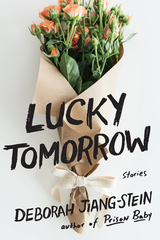 Lucky Tomorrow: Stories
Deborah Jiang-Stein
University of Minnesota Press, 2025 Lives of longing and resilience, searching and belonging in a debut story collection from a memoirist and renowned advocate for change
For a Lucky Tomorrow Buy a Flower Today. Is it true? a prospective customer asks. About the luck? “Absolutely!” Felma says. Flowers, she knows, are all that’s anchored in this world, even if not for long, and like others in these luminous stories, Felma knows what it is to be rootless. In Lucky Tomorrow, Deborah Jiang-Stein presents an unforgettable cast of characters dreaming of redemption, purpose, and connection in a wounded yet beautiful world. A young girl stuck working at her family’s candy stand. A former priest trapped on a crowded train. A prisoner robbed of the book she’s been writing. A father haunted by his broken family. A woman confined to a psych ward. A reverend caring for her dying housemate. And Felma, a flower vendor, searching for the daughter she gave birth to while in prison, who was swiftly bundled away. Felma’s story leads us in, through, and around the others—a central beating heart for these lives on the fringes, where Jiang-Stein finds a singular, tenacious humanity. The stories in Lucky Tomorrow move through settings drawn from the path of the author’s own life: Seattle, where she grew up after being born in an Appalachian prison; Tokyo, where she once lived; the Twin Cities, where she currently resides; and the American South, where she travels for much of her advocacy work with women in prison. Pushing the boundaries of genre, Jiang-Stein delicately layers the stories of these outcasts, eccentrics, and visionaries, gathering them in from the shadows with remarkable empathy and candor, laying bare our shared sorrows and joys.
lucky wreck
Ada Limon
Autumn House Press, 2006 The winner of the 2005 Autumn House Press Poetry Prize, selected by Jean Valentine. Ada Limon's first full-length poetry book--startling and funny--Limon is a poet to keep your eye on.
Lucky Wreck: Poems
Ada Limón
Autumn House Press, 2021 The poems in Lucky Wreck trace the excitement of plans and the necessary swerving detours we must take when those plans fail. Looking to shipwrecks on the television, road trips ending in traffic accidents, and homes that become sites of infestation, Ada Limón finds threads of hope amid an array of small tragedies and significant setbacks. Open, honest, and grounded, the poems in this collection seek answers to familiar questions and teach us ways to cope with the pain of many losses with earnestness and humor. Through the wrecks, these poems continue to offer assurance.
This darkness is not the scary one,
it’s the one before the sun comes up,
the one you can still breathe in.
Celebrating the fifteenth anniversary of Limón’s award-winning debut, this edition includes a new introduction by the poet that reflects on the book and on how her writing practice has developed over time.
Lucrece and Brutus: Glory in the Land of Tender
Madeleine de Scudéry
Iter Press, 2021 A collection of texts by a pioneering seventeenth-century French woman author.
Comprising texts by Madeleine de Scudéry, including many from her novel Clélie, this volume focuses on the story of Lucretia, the Roman matron whose rape and suicide led to the downfall of the Roman monarchy. Through her work, Scudéry seeks to contrast the enormous cultural contributions of women with their physical vulnerability and to propose an alternative to sexual violation, as envisioned on the Map of the Land of Tender that charts an imaginary land in the novel and outlines a path toward love. In Scudéry’s version of this tale, Lucrece and her beloved, Brutus, follow the path of tender friendship. Scudéry contradicts history’s characterization of Lucrece as craving glory in the form of fame. Indeed, contrary to ancient sources, Lucrece’s glory will be her decision to sacrifice herself secretly for her tender friend.
 Lucrecia Martel
Gerd Gemünden
University of Illinois Press, 2019 Films like Zama and The Headless Woman have made Lucrecia Martel a fixture on festival marquees and critic's best lists. Though often allied with mainstream figures and genre frameworks, Martel works within art cinema, and since her 2001 debut The Swamp she has become one of international film's most acclaimed auteurs.Gerd Gemünden offers a career-spanning analysis of a filmmaker dedicated to revealing the ephemeral, fortuitous, and endless variety of human experience. Martel's focus on sound, touch, taste, and smell challenge film's usual emphasis on what a viewer sees. By merging of these and other experimental techniques with heightened realism, she invites audiences into film narratives at once unresolved, truncated, and elliptical. Gemünden aligns Martel's filmmaking methods with the work of other international directors who criticize—and pointedly circumvent—the high-velocity speeds of today's cinematic storytelling. He also explores how Martel's radical political critique forces viewers to rethink entitlement, race, class, and exploitation of indigenous peoples within Argentinian society and beyond.
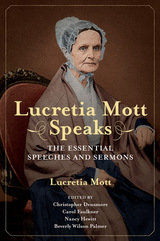 Lucretia Mott Speaks: The Essential Speeches and Sermons
Lucretia Mott. Edited by Christopher Densmore, Carol Faulkner, Nancy Hewitt, and Beverly Wilson Palmer
University of Illinois Press, 2017 Committed abolitionist, controversial Quaker minister, tireless pacifist, fiery crusader for women's rights--Lucretia Mott was one of the great reformers in America history. Her sixty years of sermons and speeches reached untold thousands of people. Yet Mott eschewed prepared lectures in favor of an extemporaneous speaking style inspired by the inner light at the core of her Quaker faith. It was left to stenographers, journalists, Friends, and colleagues to record her words for posterity. Drawing on widely scattered archives, newspaper accounts, and other sources, Lucretia Mott Speaks unearths the essential speeches and remarks from Mott's remarkable career. The editors have chosen selections representing important themes and events in her public life. Extensive annotations provide vibrant context and show Mott's engagement with allies and opponents. The speeches illuminate her passionate belief that her many causes were all intertwined. The result is an authoritative resource, one that enriches our understanding of Mott's views, rhetorical strategies, and still-powerful influence on American society.
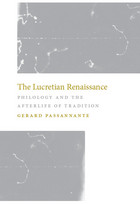 The Lucretian Renaissance: Philology and the Afterlife of Tradition
Gerard Passannante
University of Chicago Press, 2011 With The Lucretian Renaissance, Gerard Passannante offers a radical rethinking of a familiar narrative: the rise of materialism in early modern Europe. Passannante begins by taking up the ancient philosophical notion that the world is composed of two fundamental opposites: atoms, as the philosopher Epicurus theorized, intrinsically unchangeable and moving about the void; and the void itself, or nothingness. Passannante considers the fact that this strain of ancient Greek philosophy survived and was transmitted to the Renaissance primarily by means of a poem that had seemingly been lost—a poem insisting that the letters of the alphabet are like the atoms that make up the universe. By tracing this elemental analogy through the fortunes of Lucretius’s On the Nature of Things, Passannante argues that, long before it took on its familiar shape during the Scientific Revolution, the philosophy of atoms and the void reemerged in the Renaissance as a story about reading and letters—a story that materialized in texts, in their physical recomposition, and in their scattering. From the works of Virgil and Macrobius to those of Petrarch, Poliziano, Lambin, Montaigne, Bacon, Spenser, Gassendi, Henry More, and Newton, The Lucretian Renaissance recovers a forgotten history of materialism in humanist thought and scholarly practice and asks us to reconsider one of the most enduring questions of the period: what does it mean for a text, a poem, and philosophy to be “reborn”?
 Lucy Stone: Speaking Out for Equality
Kerr, Andrea M
Rutgers University Press, 1992 No study of women's history in the United States is complete without an account of Lucy Stone's role in the nineteenth-century drive for legal and political rights for women.This first fully documented biography of Stone describes her rapid rise to fame and power and her later attempt at an equitable mariage. Lucy Stone was a Massachusetts newspaper editor, abolitionist, and charismatic orator for the women's rights movement in the last half of the nineteenth century. She was deeply involved in almost every reform issue of her time. Charles Sumner, Frederick Douglass, William Lloyd Garrison, Julia Ward Howe, Horace Greeley, and Louisa May Alcott counted themselves among her friends. Through her public speaking and her newspaper, the Woman's Journal, Stone became the most widely admired woman's rights spokeswoman of her era. In the nineteenth century, Lucy Stone was a household name. Kerr begins with Stone's early roots in a poor family in western Massachusetts. She eventually graduated from Oberlin College and then became a full-time public speaker for an anti-slavery society and for women's rights. Despite Stone's strident anti-marriage ideology, she eventually wed Henry Brown Blackwell, and had her first child at the age of thirty-nine. Although Kerr tells us about Stone's public accomplishments, she emphasizes Stone's personal struggle for autonomy. "Lucy Stone (Only)" was Stone's trademark signature following her marriage. Her refusal to surrender her birth name was one example of her determination to retain her individuality in an era where a woman's right to a separate identity ended with marriage. Of equal importance is Kerr's discussion of Stone's relationship with Susan B. Anthony and Elizabeth Cady Stanton, as well as her revisionist treatment of the schism which eventually divided Stone from Stanton and Anthony. Stone urged legislators not to ignore the need for women's suffrage as they rushed to enfranchise black males. Stanton and Anthony dwelt only on the need for women's suffrage, at the expense of black suffrage. Women's historians, the general reader, and historians of the family will appreciate the story of Stone's attempt to balance the conflicting demands of career and family.
Lucy's Dance
Deb Vanasse
University of Alaska Press, 2011 A charming children’s book about the return of traditional dancing to one Yup’ik village, Lucy’s Dance tells the story of a little girl who is determined to help her grandfather demonstrate for the people of the town the beauty and complexity of old-style dancing. Threaded through the story are accounts of Yup’ik arts such as drumming, singing, and storytelling through dance, all brought to life with beautiful, full-color illustrations.
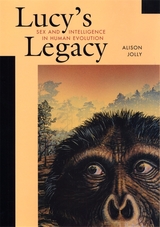 Lucy’s Legacy: Sex and Intelligence in Human Evolution
Alison Jolly
Harvard University Press, 1999 Alison Jolly believes that biologists have an important story to tell about being human—not the all-too-familiar tale of selfishness, competition, and biology as destiny but rather one of cooperation and interdependence, from the first merging of molecules to the rise of a species inextricably linked by language, culture, and group living. This is the story that unfolds in Lucy’s Legacy, the saga of human evolution as told by a world-renowned primatologist who works among the female-dominant ringtailed lemurs of Madagascar.
We cannot be certain that Lucy was female—the bones themselves do not tell us. However, we do know, as Jolly points out in this erudite, funny, and informative book, that the females who came after Lucy—more adept than their males in verbal facility, sharing food, forging links between generations, migrating among places and groups, and devising creative mating strategies—played as crucial a role in the human evolutionary process as “man” ever did. In a book that takes us from the first cell to global society, Jolly shows us that to learn where we came from and where we go next, we need to understand how sex and intelligence, cooperation and love, emerged from the harsh Darwinian struggle in the past, and how these natural powers may continue to evolve in the future.
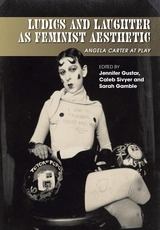 Ludics and Laughter as Feminist Aesthetic: Angela Carter at Play
Edited by Jennifer Gustar
Sussex Academic Press, 2022 Angela Carter's provocations to laughter and her enchantment with ludic narrative strategies are two key aspects of her aesthetic practice, neither of which has been the focus of sustained study. Ludics and Laughter as Feminist Aesthetic: Angela Carter at Play ;responds to this lacuna in Carter criticism. This international collection of eleven essays from acclaimed Carter scholars and emerging voices in the field of Carter studies seeks to reclaim play as a serious undertaking for feminist writing and scholarship and to foreground laughter as a potent affect. While Carter's work turned to comedy in the later years, from the first publication in 1966 until her last in 1992, her fiction, poetry and journalism engaged in sharp social and cultural critique; she habitually engaged this critique through ludic structures and wickedly funny narratives that challenged conventional norms and ways of thinking. Contributors explore the diverse ways in which Carter compelled a complex and often uneasy laughter by means of a controversial aesthetic that merges a persistently ludic sensibility with a biting intransigent wit. This volume draws on theories of play, surrealism, feminism, as well as studies of feminist humour and Carter's own journals and diaries to reveal the ways in which her work moves readers towards the unexpected. This volume will be of relevance both to scholars of Carter's work and of feminist humour more generally; as well, it will be of interest to students and general readers of Carter's fiction, journalism and poetry.
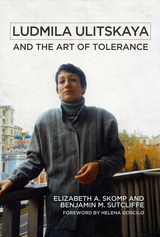 Ludmila Ulitskaya and the Art of Tolerance
Elizabeth Skomp and Benjamin M. Sutcliffe, Foreword by Helena Goscilo
University of Wisconsin Press, 2015 Novelist Ludmila Ulitskaya is a crucial cultural figure in contemporary Russia, garnering both literary awards and best-seller status. Engaging with the past to combat the creeping authoritarianism of the Putin era, she has become the latest in a long line of Russian dissident authors championing the values of liberalism and tolerance while critiquing the state. Ludmila Ulitskaya and the Art of Tolerance is the first English-language book about this influential writer, contextualizing her in the shifting landscape of post-Soviet society and culture.
Drawing on interviews with Ulitskaya and sources not readily available to Western scholars, Elizabeth A. Skomp and Benjamin M. Sutcliffe explore the ethical ideals that make Ulitskaya’s novels resonate in today’s Russia—tolerance, sincerity, and diversity—and examine how she uses innovative imagery to personalize history through a focus on body and kinship. This is essential reading for anyone interested in contemporary Russian literature and society.
Ludwig Bamberger: German Liberal Political and Social Critic, 1823-1899
Stanley Zucker
University of Pittsburgh Press, 1975
A political biography of a leading German liberal, this book carefully examines the life of Ludwig Bamberger from his university days in the 1840s until his death in 1899. Not only does it deal exhaustively with his career, it unfolds the major issues disputed in Germany during the latter half of the nineteenth century.: socialism, financial and political unification, parliamentarism, protectionism, and colonialism. Bamberger's career offers a vehicle to explore the political and social evolution of Germany, and his varied life illuminates the strength and weaknesses of German liberalism as it confronted and ultimately failed to overcome its competitors.
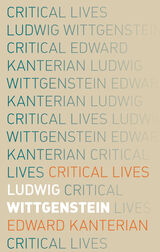 Ludwig Wittgenstein
Edward Kanterian
Reaktion Books, 2007 Ludwig Wittgenstein is generally considered as the greatest philosopher since Immanuel Kant, and his personal life, work, and his historical moment intertwined in a fascinating, complex web. Noted scholar Edward Kanterian explores these intersections in Ludwig Wittgenstein, the newest title in the acclaimed Critical Lives series. Wittgenstein’s works—from Tractatus Logico-Philosophicus to the posthumously published Philosophical Investigations—are notoriously dense, and Kanterian carefully distills them here, proposing thought-provoking new interpretations. Yet the philosopher’s passions were not solely confined to theoretical musings, and the book explores Wittgenstein’s immersion in art and music and his social position as a member of the sophisticated Viennese upper class at the turn of the century. His personal and professional relationships also offer insights into his thoughts, as he was friends with the greatest thinkers of the twentieth century, including John Maynard Keynes, George Edward Moore, Bertrand Russell, and Gilbert Royle. The philosopher was also deeply tormented by ethical and religious questions, and his internal turmoil, Kanterian argues, gives us a deeper understanding of the important conflicts and tensions of his age. Ultimately, the author contends, Wittgenstein’s life reveals insights into the ethical quandaries of our own time. A readable and concise account, Ludwig Wittgenstein is an informative, accessible introduction to the one of the greatest thinkers of our age.
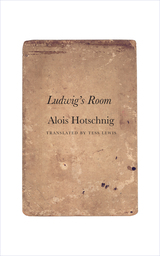 Ludwig's Room
Alois Hotschnig
Seagull Books, 2014 When Kurt Weber inherits his great-uncle’s lakeside house, he finds traces of the dark secrets of his family’s past. The early inhabitants of the house haunt his dreams nightly. And one day a ghostlike woman appears before him, hiding herself in a room that had been kept locked throughout his childhood. Inside, Kurt finds a hidden stash of photographs, letters, and documents. As he deciphers them, he gradually understands the degree of complicity in wartime horrors by his family and among his neighbors.
As the story unfolds, it becomes clear that the entire village adheres to an old and widely understood agreement not to expose the many members in the community who had been involved with a nearby prison camp during World War II. This knowledge wraps the entire community—those involved, and those who know of the involvement—in inescapable guilt for generations. Translated from the original German by Tess Lewis, Ludwig’s Room is a story of love, betrayal, honor, and cowardice, as well as the burden of history and the moral demands of the present.
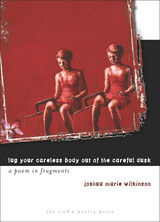 Lug Your Careless Body out of the Careful Dusk: A Poem in Fragments
Joshua Marie Wilkinson
University of Iowa Press, 2006 Drawing from the paintings of Susan Rothenberg, Gwyneth Scally, and Eric Fischl as well as from the photography of Allison Maletz, Joshua Marie Wilkinson’s Lug Your Careless Body out of the Careful Dusk is a book-length poem written in small fragments. Comprised of seven sections, the poem is formed as much by the poet’s travels through Turkey, the Baltics, and Eastern Europe as it is by the movies of Rainer Werner Fassbinder, Krzysztof Kieslowski, and Bill Morrison. The painters Francis Bacon and Lucian Freud are here alongside whispers of Emily Dickinson and Wallace Stevens. Lug Your Careless Body out of the Careful Dusk is a book of cinematic images and fragments, of small stories overheard and quickly abandoned, of hidden letters and phone booths, and of ghosts who return with questions. Born and raised in Seattle’s Haller Lake neighborhood, Joshua Marie Wilkinson is the author of one other book of poetry, Suspension of a Secret in Abandoned Rooms, and the chapbook A Ghost as King of the Rabbits. He holds an MFA from the University of Arizona and an MA in film studies from University College Dublin. Presently he lives in Denver, Colorado, where he is pursuing his doctorate in English and creative writing and completing his first film.
Lugiim Yuraa
Deb Vanasse
University of Alaska Press, 2011 A charming children’s book about the return of traditional dancing to one Yup’ik village, Lugiim Yuraa (Lucy’s Dance), written in the Yup'ik language, tells the story of a little girl who is determined to help her grandfather demonstrate for the people of the town the beauty and complexity of old-style dancing. Threaded through the story are accounts of Yup’ik arts such as drumming, singing, and storytelling through dance, all brought to life with beautiful, full-color illustrations.
 Luis Buñuel: The Red Years, 1929–1939
Román Gubern
University of Wisconsin Press, 2011 The turbulent years of the 1930s were of profound importance in the life of Spanish film director Luis Buñuel (1900–1983). He joined the Surrealist movement in 1929 but by 1932 had renounced it and embraced Communism. During the Spanish Civil War (1936–39), he played an integral role in disseminating film propaganda in Paris for the Spanish Republican cause.
Luis Buñuel: The Red Years, 1929–1939 investigates Buñuel’s commitment to making the politicized documentary Land without Bread (1933) and his key role as an executive producer at Filmófono in Madrid, where he was responsible in 1935–36 for making four commercial features that prefigure his work in Mexico after 1946. As for the republics of France and Spain between which Buñuel shuttled during the 1930s, these became equally embattled as left and right totalitarianisms fought to wrest political power away from a debilitated capitalism.
Where it exists, the literature on this crucial decade of the film director’s life is scant and relies on Buñuel’s own self-interested accounts of that complex period. Román Gubern and Paul Hammond have undertaken extensive archival research in Europe and the United States and evaluated Buñuel’s accounts and those of historians and film writers to achieve a portrait of Buñuel’s “Red Years” that abounds in new information.
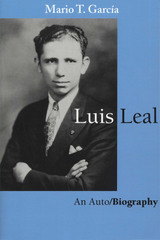 Luis Leal: An Auto/Biography
By Mario T. García
University of Texas Press, 2000 Professor Luis Leal is one of the most outstanding scholars of Mexican, Latin American, and Chicano literatures and the dean of Mexican American intellectuals in the United States. He was one of the first senior scholars to recognize the viability and importance of Chicano literature, and, through his perceptive literary criticism, helped to legitimize it as a worthy field of study. His contributions to humanistic learning have brought him many honors, including Mexico's Aquila Azteca and the United States' National Humanities Medal. In this testimonio or oral history, Luis Leal reflects upon his early life in Mexico, his intellectual formation at Northwestern University and the University of Chicago, and his work and publications as a scholar at the Universities of Illinois and California, Santa Barbara. Through insightful questions, Mario García draws out the connections between literature and history that have been a primary focus of Leal's work. He also elicits Leal's assessment of many of the prominent writers he has known and studied, including Mariano Azuela, William Faulkner, Octavio Paz, Carlos Fuentes, Juan Rulfo, Gabriel García Márquez, Jorge Luis Borges, Tomás Rivera, Rolando Hinojosa, Rudolfo Anaya, Elena Poniatowska, Sandra Cisneros, Richard Rodríguez, and Ana Castillo.
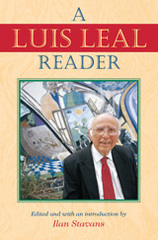 A Luis Leal Reader
Luis Leal
Northwestern University Press, 2007 Since his first publication in 1942, Luis Leal has likely done more than any other writer or scholar to foster a critical appreciation of Mexican, Chicano, and Latin American literature and culture. This volume, bringing together a representative selection of Leal’s writings from the past sixty years, is at once a wide-ranging introduction to the most influential scholar of Latino literature and a critical history of the field as it emerged and developed through the twentieth century.
Instrumental in establishing Mexican literary studies in the United States, Leal’s writings on the topic are especially instructive, ranging from essays on the significance of symbolism, culture, and history in early Chicano literature to studies of the more recent use of magical realism and of individual New Mexican, Tejano, and Mexican authors such as Juan Rulfo, Carlos Fuentes, José Montoya, and Mariano Azuela. Clearly and cogently written, these writings bring to bear an encyclopedic knowledge, a deep understanding of history and politics, and an unparalleled command of the aesthetics of storytelling, from folklore to theory. This collection affords readers the opportunity to consider—or reconsider—Latino literature under the deft guidance of its greatest reader.
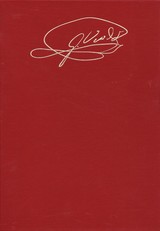 Luisa Miller: Melodramma tragico in Three Acts by Salvadore Cammarano
Giuseppe Verdi
University of Chicago Press, 1992 Luisa Miller, a milestone in the maturation of Verdi's style, is the fifth work to be published in The Works of Giuseppe Verdi. Following the strict requirements of the series, this edition is based on Verdi's autograph and other authentic sources, and has been reviewed by a distinguished editorial board—Philip Gossett (general editor), Julian Budden, Martin Chusid, Francesco Degrada, Ursula Günter, Giorgio Pestelli, and Pierluigi Petrobelli. It is available as a two-volume set: a full orchestral score and a critical commentary. The newly set score is printed on acid-free paper and beautifully bound in an oversized format. The introduction to the score discusses the work's genesis, sources, and performance history as well as performance practice, instrumentation, and problems of notation. The critical commentary discusses editorial decisions and identifies the sources of alternate readings of the music and libretto.
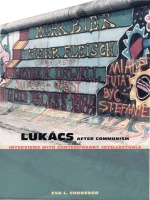 Lukács After Communism: Interviews with Contemporary Intellectuals
Eva L. Corredor
Duke University Press, 1997 Since the collapse of communism in Eastern Europe, the validity of Marxism and Marxist theory has undergone intense scrutiny both within and outside the academy. In Lukács After Communism, Eva L. Corredor conducts ten lively and engaging interviews with a diverse group of international scholars to address the continued relevance of György Lukács’s theories to the post-communist era. Corredor challenges these theoreticians, who each have been influenced by the man once considered the foremost theoretician of Marxist aesthetics, to reconsider the Lukácsean legacy and to speculate on Marxist theory’s prospects in the coming decades. The scholars featured in this collection—Etienne Balibar, Peter Bürger, Terry Eagleton, Fredric Jameson, Jacques Leenhardt, Michael Löwy, Roberto Schwarz, George Steiner, Susan Suleiman, and Cornel West—discuss a broad array of literary and political topics and present provocative views on gender, race, and economic relations. Corredor’s introduction provides a biographical synopsis of Lukács and discusses a number of his most important theoretical concepts. Maintaining the ongoing vitality of Lukács’s work, these interviews yield insights into Lukács as a philosopher and theorist, while offering anecdotes that capture him in his role as a teacher-mentor.
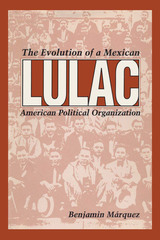 LULAC: The Evolution of a Mexican American Political Organization
By Benjamin Márquez
University of Texas Press, 1993 The League of United Latin American Citizens (LULAC) is one of the best-known and active national organizations that represent Mexican Americans and their political interests. Since its founding in Corpus Christi, Texas, in 1929, it has served as a vehicle through which Mexican Americans can strive for equal rights and economic assimilation into Anglo American society. This study is the first comprehensive political history of LULAC from its founding through the 1980s. Márquez explores the group’s evolution from an activist, grassroots organization in the pre– and post–World War II periods to its current status as an institutionalized bureaucracy that relies heavily on outside funding to further its politically conservative goals. His information is based in part on many primary source materials from the LULAC archives at the University of Texas at Austin, the Houston Public Library, and the University LULAC publications, as well as interviews with present and past LULAC activists. Márquez places this history within the larger theoretical framework of incentive theory to show how changing, and sometimes declining, membership rewards have influenced people’s participation in LULAC and other interest groups over time. Ironically, as of 1988, LULAC could claim fewer than 5,000 dues-paying members, yet a dedicated and skillful leadership secured sufficient government and corporate monies to make LULAC one of the most visible and active groups in Mexican American politics. Given the increasing number of interest groups and political action committees involved in national politics in the United States, this case study of a political organization’s evolution will be of interest to a wide audience in the political and social sciences, as well as to students of Mexican American and ethnic studies.
Lulu Linear Punctated: Essays in Honor of George Irving Quimby
Edited by Robert C. Dunnell, Donald K. Grayson, and Walter N. Koelz
University of Michigan Press, 1983 Many archaeologists and anthropologists of note contributed chapters to this collection, which pays tribute to archaeologist George Irving Quimby on his 1983 retirement from the University of Washington. James Griffin, Albert Spaulding, Lewis Binford, David Brose, and many more write here about archaeology in the Midwest and other areas of North America. Griffin contributes the first chapter: “George Irving Quimby: The Formative Years.”
Lumbar Breakdown Caused by Erect Posture in Man
Frederick P. Thieme
University of Michigan Press, 1950 In this study of lumbar breakdown (specifically spondylolisthesis and herniated intervertebral discs), Frederick P. Thieme finds that mechanical strains resulting from erect posture and lumbar curvature do contribute to low back breakdown in humans.
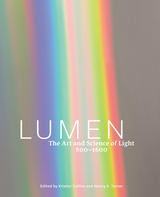 Lumen: The Art and Science of Light, 800–1600
Kristen Collins
J. Paul Getty Trust, The, 2024 Sumptuously illustrated with dazzling objects, this publication explores the ways art and science worked hand in hand in the Middle Ages and Renaissance.
Through the manipulation of materials, such as gold, crystal, and glass, medieval artists created dazzling light-filled environments, evoking, in the everyday world, the layered realms of the divine. While contemporary society separates science and spirituality, the medieval world harnessed the science of light to better perceive and understand the sacred. From 800 to 1600, the study of astronomy, geometry, and optics emerged as a framework that was utilized by theologians and artists to comprehend both the sacred realm and the natural world.
Through essays written by contributors from the fields of art history, the history of science, and neuroscience, and with more than two hundred illustrations, including glimmering golden reliquaries, illuminated manuscripts, rock crystal vessels, astronomical instruments, and more, Lumen cuts across religious, political, and geographic boundaries to reveal the ways medieval Christian, Jewish, and Islamic artists, theologians, and thinkers studied light. To convey the sense of wonder created by moving light on precious materials, a number of contemporary artworks are placed in dialogue with historic objects.
This volume is published to accompany an exhibition on view at the J. Paul Getty Museum at the Getty Center from September 10 to December 8, 2024.
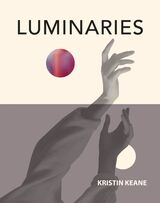 Luminaries
Kristin Keane
Omnidawn, 2021 Agnes has been drifting away from herself. People look through her, her husband doesn’t understand her, and lately, she’s begun losing the sensations in her body. When a tube of shoplifted lipstick awakens her back to life, an impulse for stealing emerges that leads her to a court-ordered service at a camp for grieving children. While initially hoping only that the time there will help her give up stealing, Agnes soon learns that she can use objects to connect grieving children with the spirits of their parents. She must navigate the choice between using her compulsion for her own pleasure and helping the bereaved. Luminaries is about the things we take and about the things that are taken from us. It asks what it means to exist in lives filled with loss, to reach for the things we hope will restore us, and the risks we’re willing to take to ward off yearning—both in our material lives and social lives.
Luminaries is the winner of the Omnidawn Fabulist Fiction Novelette/Chapbook Prize, selected by Kellie Wells.
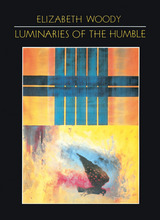 Luminaries of the Humble
Elizabeth Woody
University of Arizona Press, 1994 This collection of poems by one of the Pacific Northwest's finest poets focuses on the land and people of that region, especially the Plateau Indian tribes and the contemporary issues that affect their lives. Luminaries of the Humble offers images of the Northwest's natural environment, with its rivers and diverse landscapes, while also conveying the author's deep personal insights, experiences, and understanding of the relationship between people and their land. Woody's strength lies in her ability to recognize connections to specific places that also define her relationship to a region. Through her work, non-Native readers can learn to see through popular misinterpretations of Native cultures that are often mistaken for truth.
In opening remarks, Woody shares anecdotes of her youth that contributed to her sense of personal history and her development as a poet. "The petroglyphs on rock in the Columbia River Gorge are part of my literary heritage," she writes. Now through the medium of the printed word, Luminaries of the Humble marks an important continuation of that tradition.
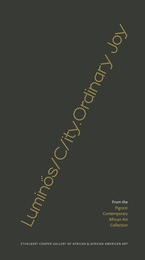 Luminós/C/ity.Ordinary Joy: From the Pigozzi Contemporary African Art Collection
Vera Grant
Harvard University Press Luminós/C/ity.Ordinary Joy: From the Pigozzi Contemporary African Art Collection celebrates the inaugural exhibition of the same name at the Ethelbert Cooper Gallery of African & African American Art at the Hutchins Center in Fall 2014.
Curators David Adjaye and Mariane Ibrahim-Lenhardt share their interpretative insights on a distinctive selection of objects from Jean Pigozzi’s superb Contemporary African Art Collection (CAAC). The catalog includes introductory texts by Henry Louis Gates, Jr., and Jean Pigozzi and is illustrated with full-color images of the exhibition art from twenty-one artists of the African continent. It also features essays from Cooper Gallery Director Vera Grant, Newark Museum Curator Christa Clarke, and Studio Museum in Harlem Director Thelma Golden.
The works discussed range from photography of the 1940s to video produced some seventy years later, and together the essays reflect upon and explore the exhibition as “a critical thesis on the contemporary condition of the continent, one which sees the city as a device to explore the complexities and nuances of urban life.” A considered part of the full exhibition experience, the catalog offers the reader entry into these cityscapes and the brilliant light of ordinary joy.
Luminous Blue Variables: and Other Major Poems
Michelle Boisseau
BkMk Press, 2021 This collection gathers major poems from Michelle Boisseau’s previous collections A Sunday in God Years, Trembling Air, Understory, No Private Life, and Indian Summer, as well as uncollected poems and interview excerpts from her three appearances on the nationally syndicagted public radio program New Letters on the Air.
Lumumba: Africa’s Lost Leader
Leo Zeilig
Haus Publishing, 2008 Patrice Lumumba (1925–61) was one of the most famous leaders of the African Independence Movement. After his murder, he became an icon of anti-imperialist struggle, and his picture, along with those of Che Guevara and Ho Chi Minh, was brandished around the world at demonstrations in the 1960s.
This second edition of the only full biography of Lumumba presents his life and quest for the Congo’s liberation, which influenced how the Cold War would be fought in Africa and the nature of the independence granted to huge swaths of the globe after 1945. For those fighting for freedom, Lumumba became a figure of resistance against the imperial colonizers of the world. Including new archival material and information gained from British intelligence, this new edition is a valuable introduction to a pivotal figure of the twentieth century.
Luna de cal / Limestone Moon: Poemas / Poems
Olivia Maciel
Swan Isle Press, 2000 In Limestone Moon Olivia Maciel interrogates the inexpressible. Metaphor reaches into a realm of light and darkness to mysteriously converse with the silence enveloping the word. The tinging of this dark light which transcends borders, reveals a vehement and genuine interior, impregnated by the seed of the dream. With almost religious intensity, the poems yield a rare fruit, whose taste evokes the ineffable.
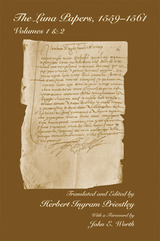 The Luna Papers, 1559–1561: Volumes 1 & 2
Translated and edited by Herbert Ingram Priestley, foreword by John E. Worth
University of Alabama Press, 2010 Marks the celebration by the modern city of Pensacola, Florida, of the 450th anniversary of Luna’s fateful colony
The 1559–1561 expedition of Don Tristán de Luna y Arellano to Florida was at the time of Spain’s most ambitious attempt yet to establish a colonial presence in southeastern North America. In June of 159, eleven ships carrying some five hundred soldiers and one thousand additional colonists, including not just Spaniards but also many of Aztec and African descent, sailed north from Veracruz, Mexico, on their way to the bay known then as Ochuse, and later as Pensacola. Finally arriving in mid-August, the colonists quickly sent word of their arrival back to Mexico and unloaded their supplies over the next five weeks, leaving vital food stores onboard the vessels until suitable warehouses could be constructed in the new settlement. When an unexpected hurricane struck on the night of September 19, 1559, however, seven of ten remaining vessels in Luna’s fleet were destroyed, and the expedition was instantaneously converted from a colonial venture to a mission in need of rescue.
Though ultimately doomed to failure by the hurricane that devastated their fleet and food stores, the Luna expedition nonetheless served as an immediate prelude to the successful establishment of a permanent colonial presence at St. Augustine on Florida’s Atlantic coast in 1565, and prefaced the eventual establishment after 1698 of three successive Spanish presidios at the same Pensacola Bay where Luna’s attempt had been made more than a century before.
 Lunacy of Light: Emily Dickinson and the Experience of Metaphor
Wendy Barker
Southern Illinois University Press
"Are you afraid of the sun?" Emily Dickinson asked a friend in 1859.
Wendy Barker states here that that apparently casual query reveals a major theme of Dickinson’s poetry, a theme she shares with women writers ranging from Anne Finch to Anne Sexton. It is a tradition based upon the inversion of the traditional male-centered metaphors of light and dark. Through time the light-giving sun has represented vitality, order, God; the light-swallowing night death, chaos, Satan. These metaphors are reinforced in the writing of Emerson, Thoreau, Hawthorne, and Keats,but Eliot, Brontë, Browning, and Dickinson use the sun and images of light quite differently.
Barker argues that since light was a masculine tradition, ithad come to represent male power, energy, sexuality—not only to Dickinson but to other women writing during the era. To these writers the inversion of the light/darkness metaphor became a countertradition used as a means to express their energies in a society that was hostile to their intelligence. Dickinson, who read avidly, could not have been insensitive to this usage of light as a masculine symbol—of her Calvinist God, of her father, of all that was male—and of darkness as a feminine symbol.
Emily Dickinson thought in a richly symbolic manner. Her most frequently used metaphor is one of light in contrast to darkness, employing single-word references to light more than one thousand times in her 1,775 poems. Barker offers close readings and new interpretations of some previously overlooked or misunderstood poems and demonstrates that "Many of her most ecstatic images are oflittle lights created from darkness." Inanswer to those critics who have characterized her poems as being piecemeal, Barker argues that Dickinson’s consistent use of light as a metaphor unifies her poetry.
In her final chapter, Barker explores the ways in which twentieth-century female writers have carried on the countertradition of the light/darkness metaphor. "That Dickinson was able so brilliantly to transform and transcend the normative metaphoric patterning of her culture, creating, in effect, a metaphor of her own, has much to do with the genius of her art."
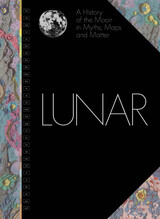 Lunar: A History of the Moon in Myths, Maps, and Matter
Edited by Matthew Shindell
University of Chicago Press, 2024 The first book to combine exquisite cartographical charts of the Moon with a thorough exploration of the Moon’s role in popular culture, science, and myth.
President John F. Kennedy’s rousing “We will go to the Moon” speech in 1961 before the US Congress catalyzed the celebrated Apollo program, spurring the US Geological Survey’s scientists to map the Moon. Over the next eleven years a team of twenty-two, including a dozen illustrator-cartographers, created forty-four charts that forever changed the path of space exploration.
For the first time, each of those beautifully hand-drawn, colorful charts is presented together in one stunning book. In Lunar, National Air and Space Museum curator Matthew Shindell’s expert commentary accompanies each chart, along with the key geological characteristics and interpretations that were set out in the original Geologic Atlas of the Moon. Interwoven throughout the book are contributions from scholars devoted to studying the multifaceted significance of the Moon to humankind around the world. Traveling from the Stone Age to the present day, they explore a wide range of topics: the prehistoric lunar calendar; the role of the Moon in creation myths of Ancient Egypt, Greece, and Rome; the role of the Moon in astrology; the importance of the Moon in establishing an Earth-centered solar system; the association of the Moon with madness and the menstrual cycle; how the Moon governs the tides; and the use of the Moon in surrealist art.
Combining a thoughtful retelling of the Moon’s cultural associations throughout history with the beautifully illustrated and scientifically accurate charting of its surface, Lunar is a stunning celebration of the Moon in all its guises.
 The Lunar Light of Whitman’s Poetry
M. Wynn Thomas
Harvard University Press, 1987 Walt Whitman stands freshly illuminated in this powerful portrait of the poet responding to his times.
Whitman’s idealistic expectations of democracy were painfully eroded by the rapidly expanding urban capitalism that, before the Civil War, increasingly threatened the economic and political power of the ordinary American. His poetry during this, his most fruitful period, became the indispensable medium allowing him to adjust to these developments. He succeeded in portraying this modern society as an invigorating natural extension of the artisanal order. After the war, however, American capitalism advanced at a pace that made it impossible for Whitman to redeem it through his poetry. His imagination defeated by realities, he invested more and more in dreams of the future, while his poetry turned to the past, Memory emerging as a central figure.
In this many-sided analysis M. Wynn Thomas relates Whitman’s work to American painting of the period; examines the poet’s evocation of nature, which he sometimes saw as a challenge to man’s confidence in himself; documents the revisions and additions Whitman made to Leaves of Grass in order to demonstrate that “my Book and the War are One”; and pays sympathetic attention to the postwar poetry, usually slighted.
 Lunar Voices: Of Tragedy, Poetry, Fiction, and Thought
David Farrell Krell
University of Chicago Press, 1995 David Farrell Krell reflects on nine writers and philosophers, including Heidegger, Derrida, Blanchot, and Holderlin, in a personal exploration of the meaning of sensual love, language, tragedy, and death. The moon provides a unifying image that guides Krell's development of a new poetics in which literature and philosophy become one.
Krell pursues important philosophical motifs such as time, rhythm, and desire, through texts by Nietzsche, Trakl, Empedocles, Kafka, and Garcia Marquez. He surveys instances in which poets or novelists explicitly address philosophical questions, and philosophers confront literary texts—Heidegger's and Derrida's appropriations of Georg Trakl's poetry, Blanchot's obsession with Kafka's tortuous love affairs, and Garcia Marquez's use of Nietzsche's idea of the Eternal Return—all linked by the tragic hero Empedocles.
In his search to understand the insatiable desire for completeness that patterns so much art and philosophy, Krell investigates the identification of the lunar voice with woman in various roles—lover, friend, sister, shadow, and narrative voice.
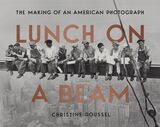 Lunch on a Beam: The Making of an American Photograph
Christine Roussel
Brandeis University Press, 2026 The untold story of the many people behind one of America’s most iconic photographs.
Lunch on a Beam, also known as Lunch Atop a Skyscraper, shows ironworkers eating lunch on a steel beam during the construction of Rockefeller Center’s RCA Building in 1932. It’s a photo so famous you can likely picture it in your mind: seated in a row, eleven men chat and break bread 850 feet above the ground, the dense cityscape behind them. While the scene may look spontaneous, the photo was taken during a publicity shoot to promote Rockefeller Center’s new skyscraper. And despite the image’s renown, for years, little information was available about its subjects or its photographer.
In Lunch on a Beam, Rockefeller Center archivist Christine Roussel interweaves the art, architectural, and social history behind the photograph with her personal experience as a confidante to the financiers who developed Rockefeller Center. She tells the stories of the fearless photographers, brazen publicity men, the ironworkers, and their immigrant and Indigenous communities. This portrait of eleven construction workers, she points out, is also a celebration of the nation’s richest man. She examines how, in the depths of the Great Depression, John D. Rockefeller, Jr., took it upon himself to build a monument to American industry and sell it to the public.
Featuring striking images from the Rockefeller Center Archives, Lunch on a Beam calls attention to the fascinating paradoxes contained in a single photo and celebrates the men who built an architectural marvel at great personal risk. This is a story of art and commerce, and the role of a photograph in the mythmaking of New York City.
Lunch With a Bigot: The Writer in the World
Amitava Kumar
Duke University Press, 2015 To be a writer, Amitava Kumar says, is to be an observer. The twenty-six essays in Lunch with a Bigot are Kumar's observations of the world put into words. A mix of memoir, reportage, and criticism, the essays include encounters with writers Salman Rushdie and Arundhati Roy, discussions on the craft of writing, and a portrait of the struggles of a Bollywood actor. The title essay is Kumar's account of his visit to a member of an ultra-right Hindu organization who put him on a hit-list. In these and other essays, Kumar tells a broader story of immigration, change, and a shift to a more globalized existence, all the while demonstrating how he practices being a writer in the world.
Lunda Under Belgian Rule: The Politics of Ethnicity
Edouard Bustin
Harvard University Press, 1975 Bustin performs an ambitious task of social analysis in this inquiry into the workings and effects of alien rule upon an African state. He takes the historically important African kingdom of Lunda through the phase of state formation, its incapsulation within the colonial system, and incorporation into the politics of independence.
 The Lung Block: Plagues, Parks, and Power in Progressive-Era New York
Adrienne deNoyelles
University of Pittsburgh Press, 2023 Public health, housing, poverty, and immigration dominated social and political discourse in early twentieth-century New York, much as they do today. The Lower East Side provided an urban environment where infectious disease and other public health concerns flourished. One city block in particular, known in muckraking circles as “The Lung Block,” housed four thousand first- and second-generation Americans in dilapidated tenements where deadly tuberculosis spread uninhibited. The Lung Block looks at a 1903 reform crusade to demolish this working-class tenement neighborhood and replace it with a park. Progressive reformers aimed to confront the area’s moral and environmental dangers, but their conceptualization of the problem and methods for addressing it placed them into direct conflict with the hand-to-mouth priorities of the residents. The campaign and its eventual failure illuminate the formidable social barriers distancing urban reformers and the marginalized populations they intend to help.
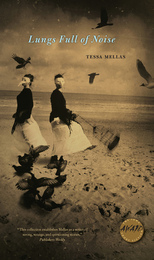 Lungs Full of Noise
Tessa Mellas
University of Iowa Press, 2013 This prize-winning debut of twelve stories explores a femininity that is magical, raw, and grotesque. Aghast at the failings of their bodies, this cast of misfit women and girls sets out to remedy the misdirection of their lives in bold and reckless ways.
Figure skaters screw skate blades into the bones of their feet to master elusive jumps. A divorcee steals the severed arm of her ex to reclaim the fragments of a dissolved marriage. Following the advice of a fashion magazine, teenaged girls binge on grapes to dye their skin purple and attract prom dates. And a college freshman wages war on her roommate from Jupiter, who has inadvertently seduced all the boys in their dorm with her exotic hermaphroditic anatomy.
But it isn’t just the characters who are in crisis. In Lungs Full of Noise, personal disasters mirror the dissolution of the natural world. Written in lyrical prose with imagination and humor, Tessa Mellas’s collection is an aviary of feathered stories that are rich, emotive, and imbued with the strength to suspend strange new worlds on delicate wings.
L’univers theatral de Corneille: Paradoxe et subtilite heroiques
A. S.-M. Goulet
Harvard University Press, 1978 In its rigorous investigation into the workings of paradox in the plays of Corneille, this book treats a primary aspect of his distinctive heroic drama. Paradox constitutes a major unifying force—both as an essential element in the complex moral and psychological makeup of Corneille's heroes and heroines, and as the mainspring of his dramatic technique. The author illuminates key patterns that recur throughout the tragedies. In particular, Rodogune and Polyeucte are revitalized through original critical interpretations. This penetrating, well-integrated, and powerfully structured study, written in French, presents new insights into the work and genius of Corneille.
 Lunkers, Keepers, and Ones that Got Away: Fish Tales from Four Generations of Anglers
Jerry Apps
Wisconsin Historical Society Press, 2025 Stories of fishing with family and friends by beloved author Jerry Apps
From his first experiences going fishing with his pa as a boy, Jerry Apps was hooked. Eighty-some years later, Apps reflects on a lifetime of fishing and the memories and lessons hauled in along the way. As he recounts the simple pleasures of casting a line from shore on a warm summer evening or reeling in a lunker on opening day of trout season, he reminds us of the values fishing can teach people of all ages: persistence, resourcefulness, and the importance of caring for our natural world.
Along with his best-loved fish tales, Apps includes fishing photos from the family album and favorite angling locales, lingo, bait, and gear. He draws on interviews with fellow fishermen and -women, his own journal entries recorded over decades, and his popular newspaper column Outdoor Notebook. And, since it’s a tradition among fishing folks to pass along tales told by others, he shares stories that have come his way from extended family and friends—some of them funny, some poignant, many embellished, and all of them keepers. Humorous pen-and-ink illustrations made by artist Sid Boyum to commemorate the annual fishing season opener add charm to this delightful volume.
In Lunkers, Keepers, and Ones that Got Away, Apps captures the exciting, heartwarming, and nostalgia-inducing experiences that fishing brings to avid and casual anglers alike.
 The Lure and the Truth of Painting: Selected Essays on Art
Yves Bonnefoy
University of Chicago Press, 1995 Yves Bonnefoy, France's most important living poet, is also a literary and art critic of renown; in writing so extensively on the visual arts, he continues the critical tradition begun in the eighteenth century by Diderot and continued in succeeding centuries by Baudelaire, Apollinaire, and other leading French poets.
The sixteen essays collected here show the breadth and depth of Bonnefoy's writings on art, aesthetics, and poetics. His lyrical ruminations range across centuries and cultures, from Byzantium to postwar France, from the paintings of Piero della Francesca to the sculptures of Alberto Giacometti and the photographs of Henri Cartier-Bresson, from the Italian Giorgio Morandi to the American Edward Hopper. Always fascinated in his poetry by the nature of color and light and the power of the image, Bonnefoy continues to pursue these themes in his discussion of the lure and truth of representation. He sees the painter as a poet whose language is a visual one, and seeks to find out what visual artists can teach those who work with words. More philosophical than historical and more poetic than critical, the essays express Bonnefoy's deep sympathy for the creative process and his great passion for individual works of art.
Bonnefoy's engagement with great art in The Lure and the Truth of Painting sheds light on the philosophy of presence and being that animates his poems. This book will be welcomed by lovers of Bonnefoy's poems and by everyone interested in the creation, history, and appreciation of art.
Yves Bonnefoy's numerous books include New and Selected Poems and In the Shadow's Light, both published by the University of Chicago Press. Richard Stamelman is director of the Center for Foreign Languages, Literatures, and Cultures and professor of romance languages at Williams College. He is the author of Lost beyond Telling: Representations of Death and Absence in Modern French Poetry.
"Few exponents of contemporary French letters deserve the attention of the reading public in America more than Yves Bonnefoy. . . . [His] writings . . . are an important lighthouse on the contemporary cultural coastline."—Emily Grosholz, The Hudson Review
Lure of the Big Screen: Cinema in Rural Australia and the United Kingdom
Karina Aveyard
Intellect Books, 2015 Lure of the Big Screen explores contexts of film exhibition and consumption in rural parts of the UK and Australia, where film theaters are often highly valued as spaces around which isolated communities can gather and interact. Going beyond national borders to highlight transnational stratifications in the rural cinema sphere, this book examines how film theaters in areas of social and economic decline are sustained by resourceful individuals and sub-commercial operating structures. Systematic analysis of cinemas in nonmetropolitan locations has yielded an original five-tiered clustering model through which Karina Aveyard recognizes a range of types between large commercial multiplexes in stable regional centers and their smallest improvised counterparts in remote settlements.
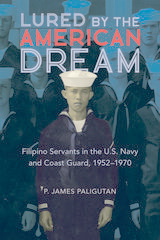 Lured by the American Dream: Filipino Servants in the U.S. Navy and Coast Guard, 1952-1970
P. James Paligutan
University of Illinois Press, 2022 Starting in 1952, the United States Navy and Coast Guard actively recruited Filipino men to serve as stewards--domestic servants for officers. Oral histories and detailed archival research inform P. James Paligutan's story of the critical role played by Filipino sailors in putting an end to race-based military policies. Constrained by systemic exploitation, Filipino stewards responded with direct complaints to flag officers and chaplains, rating transfer requests that flooded the bureaucracy, and refusals to work. Their actions had a decisive impact on seagoing military’s elimination of the antiquated steward position. Paligutan looks at these Filipino sailors as agents of change while examining the military system through the lens of white supremacy, racist perceptions of Asian males, and the motives of Filipinos who joined the armed forces of the power that had colonized their nation. Insightful and dramatic, Lured by the American Dream is the untold story of how Filipino servicepersons overcame tradition and hierarchy in their quest for dignity.
The Lusiad
Luis de Camoens
Harvard University Press
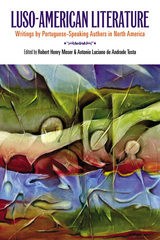 Luso-American Literature: Writings by Portuguese-Speaking Authors in North America
Moser, Robert H
Rutgers University Press, 2011 Portuguese and Cape Verdean immigrants have had a significant presence in North America since the nineteenth century. Recently, Brazilians have also established vibrant communities in the U.S. This anthology brings together, for the first time in English, the writings of these diverse Portuguese-speaking, or "Luso-American" voices. Historically linked by language, colonial experience, and cultural influence, yet ethnically distinct, Luso-Americans have often been labeled an "invisible minority." This collection seeks to address this lacuna, with a broad mosaic of prose, poetry, essays, memoir, and other writings by more than fifty prominent literary figures--immigrants and their descendants, as well as exiles and sojourners. It is an unprecedented gathering of published, unpublished, forgotten, and translated writings by a transnational community that both defies the stereotypes of ethnic literature, and embodies the drama of the immigrant experience.
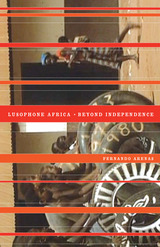 Lusophone Africa: Beyond Independence
Fernando Arenas
University of Minnesota Press, 2010 Lusophone Africa: Beyond Independence is a study of the contemporary cultural production of Portuguese-speaking Africa and its critical engagement with globalization in the aftermath of colonialism, especially since the advent of multiparty politics and market-oriented economies.
Exploring the evolving relationship of Lusophone Africa with Portugal, its former colonial power, and Brazil, Fernando Arenas situates the countries on the geopolitical map of contemporary global forces. Drawing from popular music, film, literature, cultural history, geopolitics, and critical theory to investigate the postcolonial condition of Portuguese-speaking Africa, Arenas offers an entirely original discussion of world music phenomenon Cesária Évora, as well as the most thorough examination to date of Lusophone African cinema and of Angolan post-civil-war fiction.
Throughout, Arenas evokes the rich multidimensionality of this community of African nations as a whole and of its individual parts: Angola, Cape Verde, Guinea-Bissau, and Mozambique, and São Tomé and Príncipe since they gained their independence in the mid-1970s. In doing so, he puts forth a conceptual framework for understanding, for the first time, recent cultural and historical developments in Portuguese-speaking Africa.
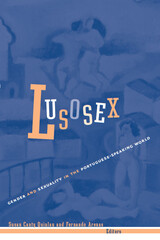 Lusosex: Gender And Sexuality In The Portuguese-Speaking World
Susan Canty Quinlan
University of Minnesota Press, 2002 The first book to examine these essential issues in a Lusophone context. Some of the most compelling theoretical debates in the humanities today center on representations of sexuality. This volume is the first to focus on the topic-in particular, the connections between nationhood, sex, and gender-in the lusophone, or Portuguese-speaking, world. Written by prominent scholars in Brazilian, Portuguese, and Lusophone African literary and cultural studies, the essays range across multiple discourses and cultural expressions, historical periods and theoretical approaches to offer a uniquely comprehensive perspective on the issues of sex and sexuality in the literature and culture of the Portuguese-speaking world that extends from Portugal to Brazil to Angola, Cape Verde, and Mozambique. Through the critical lenses of gay and lesbian studies, queer theory, postcolonial studies, feminist theory, and postmodern theory, the authors consider the work of such influential literary figures as Clarice Lispector and Silviano Santiago. An important aspect of the volume is the publication of a newly discovered-and explicitly homoerotic-poem by Fernando Pessoa, published here for the first time in the original Portuguese and in English translation. Chapters take up questions of queer performativity and activism, female subjectivity and erotic desire, the sexual customs of indigenous versus European Brazilians, and the impact of popular music (as represented by Caetano Veloso and others) on interpretations of gender and sexuality. Challenging static notions of sexualities within the Portuguese-speaking world, these essays expand our understanding of the multiplicity of differences and marginalized subjectivities that fall under the intersections of sexuality, gender, and race.Contributors: Severino João Albuquerque, U of Wisconsin; Jossianna Arroyo, U of Michigan; César Braga-Pinto, Rutgers; Ana Paula Ferreira, U of California, Irvine; John Gledson, U of Liverpool; Russell G. Hamilton, Vanderbilt; André Torres Lepecki; Mário César Lugarinho, Universidade Federal Fluminense, Brazil; Phyllis Peres, U of Maryland; Ronald W. Sousa, U of Illinois; João Silvério Trevisan; Richard Zenith.
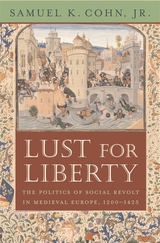 Lust for Liberty: The Politics of Social Revolt in Medieval Europe, 1200–1425
Samuel K. Cohn Jr.
Harvard University Press, 2008 Lust for Liberty challenges long-standing views of popular medieval revolts. Comparing rebellions in northern and southern Europe over two centuries, Samuel Cohn analyzes their causes and forms, their leadership, the role of women, and the suppression or success of these revolts.
Popular revolts were remarkably common--not the last resort of desperate people. Leaders were largely workers, artisans, and peasants. Over 90 percent of the uprisings pitted ordinary people against the state and were fought over political rights--regarding citizenship, governmental offices, the barriers of ancient hierarchies--rather than rents, food prices, or working conditions. After the Black Death, the connection of the word "liberty" with revolts increased fivefold, and its meaning became more closely tied with notions of equality instead of privilege.
The book offers a new interpretation of the Black Death and the increase of and change in popular revolt from the mid-1350s to the early fifteenth century. Instead of structural explanations based on economic, demographic, and political models, this book turns to the actors themselves--peasants, artisans, and bourgeois--finding that the plagues wrought a new urgency for social and political change and a new self- and class-confidence in the efficacy of collective action.
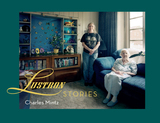 Lustron Stories
Charles Mintz
Ohio State University Press, 2016 The Lustron Corporation manufactured porcelain-baked, enamel-coated all-steel houses between 1948 and 1950 in Columbus, OH. Virtually everything—exterior siding, roof, interior walls, cabinets, and ceilings—was made out of this material. The components were shipped to site on specially designed trailers and assembled by local contractors using only wrenches. About 2,500 Lustrons were sold, mostly in the eastern United States, but as far afield as Miami and Los Alamos. Roughly two-thirds are still being used today.
A remarkable cross section of individuals and families live in these modest (~1100 sq. ft.) homes. While certainly diverse in age and place in life, the homeowners are still firmly working class. Everyone who lives in a Lustron home has an opinion about it. The material is miserable to cut or drill into. Repairs are more about metalworking and enamel finishing than carpentry or house painting. And magnets tend to be a popular solution for hanging objects inside and outside the steel walls.
Four years ago, Charles Mintz set out to photograph the people living in these homes. The residents, owners, or both were photographed outside and occasionally inside. Mintz used a large format wooden camera and available light. This book features 65 of the resulting photographs and essays from Shannon Thomas Perich, Curator of the Photographic History Collection at Smithsonian’s National Museum of American History, and Jeffrey Head, author and architecture critic.
The Lute in the Dutch Golden Age: Musical Culture in the Netherlands ca. 1580-1670
Jan W. J. Burgers
Amsterdam University Press, 2014 Closely associated with the social elite, the lute occupied a central place in the culture of the Dutch Golden Age. In this first comprehensive study of the instrument’s role in seventeenth-century Netherlands, Jan W. J. Burgers explores how it functioned as the universal means of solo music making, group performance, and accompaniment. He showcases famous and obscure musicians; lute music in books and manuscripts; lute makers and the international lute trade; and the instrument’s place in Dutch literature and art of the period.
Enhanced by beautiful illustrations, this study constitutes an important contribution to our knowledge about the lute and its Golden Age heyday.
Luther. The Origin of Modern Self-Consciousness: Reiner Schürmann Lecture Notes
Reiner Schürmann
Diaphanes, 2020 If we are to understand the specifically modern function of self-consciousness, we must first look to the origins of the concept. Among the key thinkers who elaborated on self-consciousness was the German monk and theologian Martin Luther. Reiner Schuermann’s writings and lectures on Luther therefore offer an innovative reading of the systematic role of self-consciousness in both premodern and modern cultures.
This volume in a planned twenty-nine-part series, Reiner Schuermann: Luther. The Origin of Modern Self-Consciousness sees Schuermann tracing Luther’s conception of the rise of self-consciousness as the subjective reference point. Schuermann then explores this conception in conversation with both the Cartesian cogito and Kantian apperception.
Luxemburg
Harry Harmer
Haus Publishing, 2003 This new biography takes a fresh view, re-examining Luxemburg's tempestuous career and her dream of socialism
Luxury, Blue Lace
S. Brook Corfman
Autumn House Press, 2019 Often, the fact of being an individual can seem wildly at odds with the experience of containing multitudes. In Luxury, Blue Lace, S. Brook Corfman takes the reader through this complicated experience of selfhood and its multitudes, exploring the many overlapping identities a single person can contain. Corfman’s poems conjure a host of identities and selves both living and dead, gesturing towards the complex way memory and loss can inhabit us. Formed by experience, history, and the strictures of gender, the poems dwell on the challenges of fully knowing and understanding the diverse parts of a subject. While they seek out a full form for the individual, they also relish the complex multiplicity of the identities that arise through self-exploration and self-knowledge. Luxury, Blue Lace was the winner of the Autumn House Rising Writer Prize in 2018.
Luxury, Blue Lace
S. Brook Corfman
Autumn House Press, 2019 Often, the fact of being an individual can seem wildly at odds with the experience of containing multitudes. In Luxury, Blue Lace, S. Brook Corfman takes the reader through this complicated experience of selfhood and its multitudes, exploring the many overlapping identities a single person can contain. Corfman’s poems conjure a host of identities and selves both living and dead, gesturing towards the complex way memory and loss can inhabit us. Formed by experience, history, and the strictures of gender, the poems dwell on the challenges of fully knowing and understanding the diverse parts of a subject. While they seek out a full form for the individual, they also relish the complex multiplicity of the identities that arise through self-exploration and self-knowledge. Luxury, Blue Lace was the winner of the Autumn House Rising Writer Prize in 2018.
 Lviv – Wroclaw, Cities in Parallel?: Myth, Memory and Migration, c. 1890-Present
Jan Fellerer
Central European University Press, 2020 After World War II, Europe witnessed the massive redrawing of national borders and the efforts to make the population fit those new borders. As a consequence of these forced changes, both Lviv and Wrocław went through cataclysmic changes in population and culture. Assertively Polish prewar Lwów became Soviet Lvov, and then, after 1991, it became assertively Ukrainian Lviv. Breslau, the third largest city in Germany before 1945, was in turn "recovered" by communist Poland as Wrocław. Practically the entire population of Breslau was replaced, and Lwów's demography too was dramatically restructured: many Polish inhabitants migrated to Wrocław and most Jews perished or went into exile. The forced migration of these groups incorporated new myths and the construction of official memory projects. The chapters in this edited book compare the two cities by focusing on lived experiences and "bottom-up" historical processes. Their sources and methods are those of micro-history and include oral testimonies, memoirs, direct observation and questionnaires, examples of popular culture, and media pieces. The essays explore many manifestations of the two sides of the same coin—loss on the one hand, gain on the other—in two cities that, as a result of the political reality of the time, are complementary.
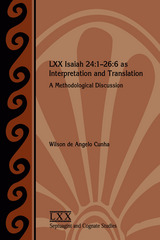 LXX Isaiah 24:1-26:6 as Interpretation and Translation: A Methodological Discussion
Wilson de Angelo Cunha
SBL Press, 2014 Explore how interpretation affects translation
In this volume Cunha argues that the differences found between the Septuagint text of Isaiah and the Hebrew of the Masoretic Text must be weighed against the literary context in which they are found. The author demonstrates that LXX Isa 24:1–26:6 can be seen as a coherent ideological composition that differs greatly from the way scholars have interpreted MT Isa 24:1–26:6. This coherence comes across through the use of certain lexemes and conjunctions throughout the passage. The book lays the case that a scribe or translator already had an interpretation before he started the process of translation that shaped his translation of the Hebrew text into Greek.
Features:
- An introduction sketching the history of research on LXX Isa 24:1–26:6
- A focused comparision of the Masoretic Text to the Septuagint
- A thorough discussion of the coherence of LXX Isa 24:1–26:6
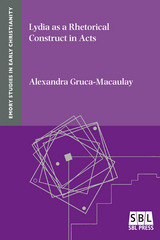 Lydia as a Rhetorical Construct in Acts
Alexandra Gruca-Macaulay
SBL Press, 2016 A new sociorhetorical study of Acts
In Lydia as a Rhetorical Construct in Acts, Gruca-Macaulay explores the sociorhetorical function of the story of Lydia, a named Lydian woman ancient interpreters would have associated with cultural stereotypes of Lydians. As a rhetorical figure, Lydia both influenced and was influenced by the ideology of the surrounding text in Acts 16, as well as the approach Luke–Acts as a whole takes to people who are somehow like Lydia.
Features:
- Displays the rhetorical-cultural portrayal of women in Luke-Acts from the perspective of a first-century Mediterranean audience as compared with the history of scholarship, specifically through a sociorhetorical interpretation of the role of Lydia in Acts
- Investigates the rhetorical function of Mediterranean social-cultural topoi in qualitative argumentation, with a focus on Greco-Roman physiognomy generally, and Lydian ethnography especially
- Introduces the rhetorical use of conceptual blending, particularly its application for gaining insight into the function of military discourse in developing the rhetorical force of the Lydia episode in Acts
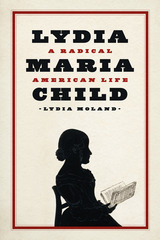 Lydia Maria Child: A Radical American Life
Lydia Moland
University of Chicago Press, 2022 Now in paperback, a compelling biography of Lydia Maria Child, one of nineteenth-century America’s most courageous abolitionists.
By 1830, Lydia Maria Child had established herself as something almost unheard of in the American nineteenth century: a beloved and self-sufficient female author. Best known today for the immortal poem “Over the River and through the Wood,” Child had become famous at an early age for spunky self-help books and charming children’s stories. But in 1833, Child shocked her readers by publishing a scathing book-length argument against slavery in the United States—a book so radical in its commitment to abolition that friends abandoned her, patrons ostracized her, and her book sales plummeted. Yet Child soon drew untold numbers to the abolitionist cause, becoming one of the foremost authors and activists of her generation.
Lydia Maria Child: A Radical American Life tells the story of what brought Child to this moment and the extraordinary life she lived in response. Through Child’s example, philosopher Lydia Moland asks questions as pressing and personal in our time as they were in Child’s: What does it mean to change your life when the moral future of your country is at stake? When confronted by sanctioned evil and systematic injustice, how should a citizen live? Child’s lifetime of bravery, conviction, humility, and determination provides a wealth of spirited guidance for political engagement today.
 A Lydia Maria Child Reader
Carolyn L. Karcher, ed.
Duke University Press, 1997 From the 1820s to the 1870s, Lydia Maria Child was as familiar to the American public as her Thanksgiving song, "Over the river and through the wood, / To grandfather’s house we go," remains today. Hardly a sphere of nineteenth-century life can be found in which Child did not figure prominently as a pathbreaker. She crusaded against slavery and racism, combated religious bigotry, championed women’s rights, publicized the plight of the urban poor, and campaigned for justice toward Native Americans. Showing an uncanny ability to pinpoint and respond to new cultural needs, Child pioneered almost every category of nineteenth-century American letters—historical fiction, the short story, children’s literature, the domestic advice book, women’s history, antislavery fiction, journalism, and the literature of aging.
This rich collection is the first to represent the full range of Child’s contributions as a literary innovator, social reformer, and progressive thinker over a career spanning six decades. It features stories, editorials, articles, and letters to politicians culled from rare newspapers and periodicals and never before published in book form; extracts from her trailblazing childrearing manual, history of women, and primer for the emancipated slaves; and a generous sampling of her best-known writings on slavery, the Indian question, poverty, and women’s rights. Witty, incisive, and often daringly unconventional, Child’s writings open a panoramic window on nineteenth-century American culture while addressing issues still relevant to our own time. In this anthology, the editor of Harriet Jacobs’s Incidents in the Life of a Slave Girl reemerges in her own right as one of the nation’s greatest prophets.
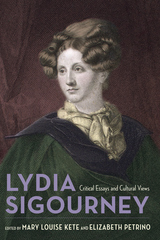 Lydia Sigourney: Critical Essays and Cultural Views
Mary Louise Kete
University of Massachusetts Press, 2018 During her lifetime, Lydia Sigourney was acclaimed as nineteenth-century America's most popular woman poet and published widely as a historian, travel writer, essayist, and educator. While serious critical attention to her work languished following her death and into the twentieth century, a growing number of critics and writers have reexamined Sigourney and her large body of writing and have given her a central place in the "new canon."
This first collection of original essays devoted to the poet's work puts many of the best scholars on Sigourney together in one place and in conversation with one another. The volume includes critical essays examining her literary texts as well as essays that unpack Sigourney's participation in the cultural movements of her day. Holding powerful opinions about the role of women in society, Sigourney was not afraid to advocate against government policies that, in her view, undermined the promise of America, even as she was held up as a paragon of American womanhood and middle-class rectitude. The resulting portrait promises to engage readers who wish to know more about Sigourney's writing, her career, and the causes that inspired her.
Along with the volume editors, contributors include Ann Beebe, Paula Bernat Bennett, Janet Dean, Sean Epstein-Corbin, Annie Finch, Gary Kelly, Paul Lauter, Amy J. Lueck, Ricardo Miguel-Alfonso, Jennifer Putzi, Angela Sorby, Joan Wry, and Sandra Zagarell.
 Lydian Architecture: Ashlar Masonry Structures at Sardis
Christopher Ratté
Harvard University Press, 2011 From the sixth to the fourth century B.C., the western Anatolian region of Lydia was home to a distinctive local tradition of ashlar masonry construction. The earliest datable example of fine stone masonry in the environs of Sardis, the capital of the Lydian empire, is the tomb of King Alyattes, who died in ca. 560 B.C. Contemporary monuments include a city gate and monumental terraces. Alyattes’ son Croesus was overthrown by the Persians in 547 B.C., but the Lydian building tradition survived in chamber tombs at Sardis and throughout Lydia.
This richly illustrated volume examines the monuments of Sardis and environs in the context of contemporary developments in Lydia and throughout the ancient Mediterranean and Near East. The study of Lydian architecture illuminates traditions of Anatolian kingship, technological exchange between Lydia and Greece and the Near East, and the origins of Persian imperial architecture.
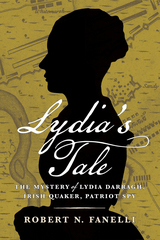 Lydia's Tale: The Mystery of Lydia Darragh, Irish Quaker, Patriot Spy
Robert N. Fanelli
Westholme Publishing, 2025 Lydia Darragh is famed for eavesdropping on British General William Howe’s staff as they planned a surprise attack, then sneaking through the lines to give warning to American soldiers. Her actions are said to have saved George Washington’s army from a devastating ambush as it lay starving and freezing on the barren hills of Whitemarsh at the end of 1777. But did the secret she brought to the Patriots really prevent their defeat? Why would a professed pacifist choose to risk her life by intervening in military affairs? Who was the mysterious intelligence officer she met between the lines? Was her story even true?
Lydia’s Tale:The Mystery of Lydia Darragh, Irish Quaker, Patriot Spy by Robert N. Fanelli uncovers a myriad of previously unknown records, knitting together for the first time the life and experiences of this remarkable heroine of the American Revolution who lived in the heart of Philadelphia. Behind her story we find an assertive woman who took an active hand in the affairs of her family and her community. Drawing on genealogical sources, legal documents, and other correspondence, the author reconstructs Lydia Darragh’s early life in Dublin, her livelihood in Pennsylvania, and how the Revolution shaped her and her children’s lives. Exploring the context of Lydia’s tale sheds light on the activities of women in Revolutionary Philadelphia, reveals the complex issues faced by pacifist Quakers in a time of war, and brings to light the contributions of Irish immigrants in securing America’s freedom.
The author’s careful research reveals little known details and corrects historians’ common misapprehensions about the Revolutionary period. Along the way, we meet often overlooked figures, including diarist Christopher Marshall and his family, the irascible Quaker recluse Bathsheba Bowers, and Blair McClenachan, the wealthy Patriot financier who also served his adopted country as a common soldier. Lydia Darragh is frequently included among that small group of women cited as Revolutionary heroines. This detailed microhistory demonstrates how legend can inform the study of history, describing how one woman’s personal reminiscence morphed into a piece of American mythology, now recovered in the historical context it deserves.
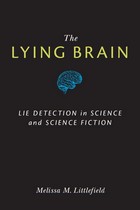 The Lying Brain: Lie Detection in Science and Science Fiction
Melissa M. Littlefield
University of Michigan Press, 2011 "The Lying Brain is a study to take seriously. Its argument is timely, clear, and of particular importance to the enlargement of our understanding of the relationships among science studies, literary studies, and technology studies."
---Ronald Schleifer, University of Oklahoma Real and imagined machines, including mental microscopes, thought translators, and polygraphs, have long promised to detect deception in human beings. Now, via fMRI and EEG, neuroscientists seem to have found what scientists, lawyers, and law enforcement officials have sought for over a century: foolproof lie detection. But are these new lie detection technologies any different from their predecessors? The Lying Brain is the first book to explore the cultural history of an array of lie detection technologies: their ideological assumptions, the scientific and fictional literatures that create and market them, and the literacies required for their interpretation. By examining a rich archive of materials about lie detection---from science to science fiction---The Lying Brain demonstrates the interconnections of science, literature, and popular culture in the development and dissemination of deception detection in the American cultural imagination. As Melissa Littlefield demonstrates, neuroscience is not building a more accurate lie detector; it is simply recycling centuries-old ideologies about deception and its detection. Cover art: "Human Brain" © Denis Barbulet, courtesy of Shutterstock.com
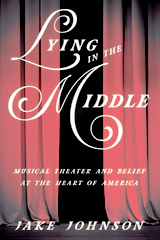 Lying in the Middle: Musical Theater and Belief at the Heart of America
Jake Johnson
University of Illinois Press, 2021 The local and regional shows staged throughout America use musical theater’s inherent power of deception to cultivate worldviews opposed to mainstream ideas. Jake Johnson reveals how musical theater between the coasts inhabits the middle spaces between professional and amateur, urban and rural, fact and fiction, fantasy and reality, and truth and falsehood. The homegrown musical provides a space to engage belief and religion—imagining a better world while creating opportunities to expand what is possible in the current one. Whether it is the Oklahoma Senior Follies or a Mormon splinter group’s production of The Sound of Music, such productions give people a chance to jolt themselves out of today’s post-truth malaise and move toward a world more in line with their desires for justice, reconciliation, and community. Vibrant and strikingly original, Lying in the Middle discovers some of the most potent musical theater taking place in the hoping, beating hearts of Americans.
 Lying On The Postcolonial Couch: The Idea Of Indifference
Rukmini Bhaya Nair
University of Minnesota Press, 2002 Exposes the complicity of language and its uses in the colonial project A revealing look into the long afterlife of colonial conquest, Lying on the Postcolonial Couch offers an original, overarching concept that informs—and helps to explain—the workings of postcoloniality. This concept, "indifference," is a play on the key critical term "difference." Indifference is a cognitive stance invented during the colonial period for the purpose of organizing the complex domain of the Indian subcontinent, one that created its own brand of poetics. Considering postcoloniality as a symptomatic condition, this book proposes a cure involving a return to buried memories of colonial trauma before the phenomenon itself succumbs to the absolute indifference of the slowly gathering amnesia of the new millennium. Rukmini Bhaya Nair traces a paper trail beginning in 1757 with the Battle of Plassey, winding through the contentious Mutiny of 1857, and ending with Salman Rushdie’s Satanic Verses predicament. Along this trail, she uncovers hidden residues of feeling, from guilt and mistrust to wonder and pleasure, and analyzes the linguistic pillars that hold up the institution of bureaucratic indifference that she exposes.
The Lying Stones of Marrakech: Penultimate Reflections in Natural History
Stephen Jay Gould
Harvard University Press, 2011 Gould covers topics as diverse as episodes in the birth of paleontology to lessons from Britain’s four greatest Victorian naturalists. This collection presents the richness and fascination of the various lives that have fueled the enterprise of science and opened our eyes to a world of unexpected wonders.
Lying up a Nation: Race and Black Music
Ronald M. Radano
University of Chicago Press, 2003 What is black music? For some it is a unique expression of the African-American experience, its soulful vocals and stirring rhythms forged in the fires of black resistance in response to centuries of oppression. But as Ronald Radano argues in this bracing work, the whole idea of black music has a much longer and more complicated history-one that speaks as much of musical and racial integration as it does of separation.
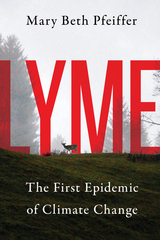 Lyme: The First Epidemic of Climate Change
Mary Beth Pfeiffer
Island Press, 2021 "Superbly written and researched." —Booklist
"Builds a strong case." —Kirkus
Lyme disease is spreading rapidly around the globe as ticks move into places they could not survive before. The first epidemic to emerge in the era of climate change, the disease infects half a million people in the US and Europe each year, and untold multitudes in Canada, China, Russia, and Australia.
Mary Beth Pfeiffer shows how we have contributed to this growing menace, and how modern medicine has underestimated its danger. She tells the heart-rending stories of families destroyed by a single tick bite, of children disabled, and of one woman’s tragic choice after an exhaustive search for a cure.
Pfeiffer also warns of the emergence of other tick-borne illnesses that make Lyme more difficult to treat and pose their own grave risks. Lyme is an impeccably researched account of an enigmatic disease, making a powerful case for action to fight ticks, heal patients, and recognize humanity’s role in a modern scourge.
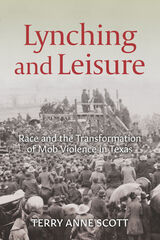 Lynching and Leisure: Race and the Transformation of Mob Violence in Texas
Terry Anne Scott
University of Arkansas Press, 2022 Winner, 2022 Ottis Lock Endowment “Best Book” Award from the East Texas Historical Association
In Lynching and Leisure, Terry Anne Scott examines how white Texans transformed lynching from a largely clandestine strategy of extralegal punishment into a form of racialized recreation in which crowd involvement was integral to the mode and methods of the violence. Scott powerfully documents how lynchings came to function not only as tools for debasing the status of Black people but also as highly anticipated occasions for entertainment, making memories with friends and neighbors, and reifying whiteness. In focusing on the sense of pleasure and normality that prevailed among the white spectatorship, this comprehensive study of Texas lynchings sheds new light on the practice understood as one of the chief strategies of racial domination in the nineteenth- and twentieth-century South.
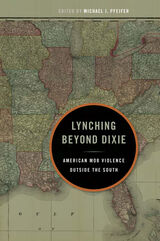 Lynching Beyond Dixie: American Mob Violence Outside the South
Edited by Michael J. Pfeifer
University of Illinois Press, 2013 In recent decades, scholars have explored much of the history of mob violence in the American South, especially in the years after Reconstruction. However, the lynching violence that occurred in American regions outside the South, where hundreds of persons, including Hispanics, whites, African Americans, Native Americans, and Asian Americans died at the hands of lynch mobs, has received less attention. This collection of essays by prominent and rising scholars fills this gap by illuminating the factors that distinguished lynching in the West, the Midwest, and the Mid-Atlantic. The volume adds to a more comprehensive history of American lynching and will be of interest to all readers interested in the history of violence across the varied regions of the United States. Contributors are Jack S. Blocker Jr., Brent M. S. Campney, William D. Carrigan, Sundiata Keita Cha-Jua, Dennis B. Downey, Larry R. Gerlach, Kimberley Mangun, Helen McLure, Michael J. Pfeifer, Christopher Waldrep, Clive Webb, and Dena Lynn Winslow.
Lynching in Colorado, 1859-1919
Stephen J. Leonard
University Press of Colorado, 2022 In this examination of more than 175 lynchings, Stephen J. Leonard illustrates the role economics, migration, race, and gender played in the shaping of justice and injustice in Colorado. One of the first comprehensive studies of the phenomenon in a Western state, Lynching in Colorado provides an essential complement to recent studies of Southern lynchings, demonstrating that at times the land of purple mountain's majesty was just as lynching-prone as was the land of Dixie. Written for general fans of Western history as well as scholars of American culture, Lynching in Colorado shows Westerners at their worst and their best as they struggled to define law and order.
Lynching in the New South: Georgia and Virginia, 1880-1930
W. Fitzhugh Brundage
University of Illinois Press, 1993 Lynching was a national crime. But it obsessed the South. W. Fitzhugh Brundage's multidisciplinary approach to the complex nature of lynching delves into the such extrajudicial murders in two states: Virginia, the southern state with the fewest lynchings; and Georgia, where 460 lynchings made the state a measure of race relations in the Deep South. Brundage's analysis addresses three central questions: How can we explain variations in lynching over regions and time periods? To what extent was lynching a social ritual that affirmed traditional white values and white supremacy? And, what were the causes of the decline of lynching at the end of the 1920s? A groundbreaking study, Lynching in the New South is a classic portrait of the tradition of violence that poisoned American life.
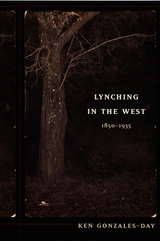 Lynching in the West: 1850-1935
Ken Gonzales-Day
Duke University Press, 2006 Accounts of lynching in the United States have primarily focused on violence against African Americans in the South. Ken Gonzales-Day reveals racially motivated lynching as a more widespread practice. His research uncovered 350 instances of lynching that occurred in the state of California between 1850 and 1935. The majority were perpetrated against Latinos, Native Americans, and Asian Americans; more Latinos were lynched in California than were persons of any other race or ethnicity. An artist and writer, Gonzales-Day began this study by photographing lynching sites in order to document the absences and empty spaces that are emblematic of the forgotten history of lynching in the West. Drawing on newspaper articles, periodicals, court records, historical photographs, and souvenir postcards, he attempted to reconstruct the circumstances surrounding the lynchings that had occurred in the spaces he was photographing. The result is an unprecedented textual and visual record of a largely unacknowledged manifestation of racial violence in the United States. Including sixteen color illustrations, Lynching in the West juxtaposes Gonzales-Day’s evocative contemporary photographs of lynching sites with dozens of historical images. Gonzales-Day examines California’s history of lynching in relation to the spectrum of extra-legal vigilantism common during the nineteenth century—from vigilante committees to lynch mobs—and in relation to race-based theories of criminality. He explores the role of visual culture as well, reflecting on lynching as spectacle and the development of lynching photography. Seeking to explain why the history of lynching in the West has been obscured until now, Gonzales-Day points to popular misconceptions of frontier justice as race-neutral and to the role of the anti-lynching movement in shaping the historical record of lynching in the United States.
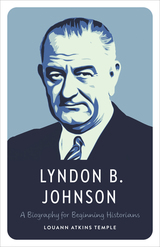 Lyndon B. Johnson: A Biography for Beginning Historians
Louann Atkins Temple
University of Texas Press, 2025 A brief biography of Lyndon B. Johnson for young readers. Louann Temple is a lifelong Texan with a personal passion for arts and education who believes that biography, with its emphasis on personalities, is ideal for introducing young people to history, with its focus on events. Temple is uniquely situated to write this biography for young readers, as she has been personally acquainted with many important people in presidential history, President Lyndon B. Johson included, and she has mentored countless middle and high school students, preparing them for college admission. Lyndon B. Johnson highlights the key events in the life of the thirty-sixth president; explores the life lessons afforded by his legacy; and reflects on the broad historical issues during his time in the White House as president from 1963 to 1969. Lyndon B. Johnson’s legacy as president is memorable as he led America during a time of great cultural change and the Vietnam War. Enhanced with a carefully curated selection of black and white photographs from three presidential libraries, this biography for beginning historians is poised to bring the best of biography and history to a new generation of readers.
 Lyndon Johnson and Europe: In the Shadow of Vietnam
Thomas Alan Schwartz
Harvard University Press, 2003 Traditionally seen as a master of domestic politics, Lyndon Johnson is frequently portrayed as inept in foreign relations, consumed by the war in Vietnam, and unable to provide vision or leadership for the Western alliance. In this persuasive revisionist history, Thomas Alan Schwartz takes issue with many of the popular and scholarly assumptions about the president seen as the classic "ugly American."
In the first comprehensive study of Johnson's policy toward Europe--the most important theater of the Cold War--Schwartz shows a president who guided the United States with a policy that balanced the solidarity of the Western alliance with the need to stabilize the Cold War and reduce the nuclear danger. He faced the dilemmas of maintaining the cohesion of the alliance, especially with the French withdrawal from NATO, while trying to reduce tensions between eastern and western Europe, managing bitter conflicts over international monetary and trade policies, and prosecuting an escalating war in Southeast Asia.
Impressively researched and engagingly written, Lyndon Johnson and Europe shows a fascinating new side to this giant of twentieth-century American history and demonstrates that Johnson's diplomacy toward Europe deserves recognition as one of the most important achievements of his presidency.
Lyric Address in Dutch Literature, 1250-1800
Edited by Cornelius van der Haven and Jürgen Pieters
Amsterdam University Press, 2018 Lyric Address in Dutch Literature, 1250-1800 provides accessible and comprehensive readings of ten Dutch lyrical poems, discussing each poem's historical context, revealing its political or ideological framing, religious elements, or the self-representational interests of the poet. The book focuses on how the use of the speaker's "I" creates distance or proximity to the social context of the time. Close, detailed analysis of rhetorical techniques, such as the use of the apostrophe, illuminates the ways in which poetry reveals tensions in society.
Lyric Complicity: Poetry and Readers in the Golden Age of Russian Literature
Daria Khitrova
University of Wisconsin Press, 2019 For many nineteenth-century Russians, poetry was woven into everyday life—in conversation and correspondence, scrapbook albums, and parlor entertainments. Blending close literary analysis with social and cultural history, Daria Khitrova shows how poetry lovers of the period all became nodes in a vast network of literary appreciation and constructed meaning. Poetry during the Golden Age was not a one-way avenue from author to reader. Rather, it was participatory, interactive, and performative.
Lyric Complicity helps modern readers recover Russian poetry’s former uses and functions—life situations that moved people to quote or perform a specific passage from a poem or a forgotten occasion that created unforgettable verse.
 The Lyric in the Age of the Brain
Nikki Skillman
Harvard University Press, 2016 Exploration of our inner life—perception, thought, memory, feeling—once seemed a privileged domain of lyric poetry. Scientific discoveries, however, have recently supplied physiological explanations for what was once believed to be transcendental; the past sixty years have brought wide recognition that the euphoria of love is both a felt condition and a chemical phenomenon, that memories are both representations of lived experience and dynamic networks of activation in the brain. Caught between a powerful but reductive scientific view of the mind and traditional literary metaphors for consciousness that have come to seem ever more naive, American poets since the sixties have struggled to articulate a vision of human consciousness that is both scientifically informed and poetically truthful.
The Lyric in the Age of the Brain examines several contemporary poets—Robert Lowell, A. R. Ammons, Robert Creeley, James Merrill, John Ashbery, Jorie Graham, and experimentalists such as Harryette Mullen and Tan Lin—to discern what new language, poetic forms, and depictions of selfhood this perplexity forces into being. Nikki Skillman shows that under the sway of physiological conceptions of mind, poets ascribe ever less agency to the self, ever less transformative potential to the imagination. But in readings that unravel factional oppositions in contemporary American poetry, Skillman argues that the lyric—a genre accustomed to revealing expansive aesthetic possibilities within narrow formal limits—proves uniquely positioned to register and redeem the dispersals of human mystery that loom in the age of the brain.
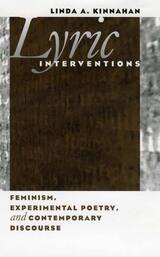 Lyric Interventions: Feminism, Experimental Poetry, Discourse
Linda A. Kinnahan
University of Iowa Press, 1998 Lyric Interventions explores linguistically innovative poetry by contemporary women in North America and Britain whose experiments give rise to fresh feminist readings of the lyric subject. The works discussed by Linda Kinnahan explore the lyric subject in relation to the social: an “I” as a product of social discourse and as a conduit for change.
Contributing to discussions of language-oriented poetries through its focus on women writers and feminist perspectives, this study of lyric experimentation brings attention to the cultural contexts of nation, gender, and race as they significantly shift the terms by which the “experimental” is produced, defined, and understood.
This study focuses upon lyric intervention in distinct but related spheres as they link public and ideological norms of identity. Firstly, lyric innovations with visual and spatial realms of cultural practice and meaning, particularly as they naturalize ideologies of gender and race in North America and the post-colonial legacies of the Caribbean, are investigated in the works of Barbara Guest, Kathleen Fraser, Erica Hunt, and M. Nourbese Philip. Secondly, experimental engagements with nationalist rhetorics of identity, marking the works of Carol Ann Duffy, Denise Riley, Wendy Mulford, and Geraldine Monk, are explored in relation to contemporary evocations of “self” in Britain. And thirdly, in discussions of all of the poets, but particularly accenuated in regard to Guest, Fraser, Riley, Mulford, and Monk, formal experimentation with the lyric “I” is considered through gendered encounters with critical and avant-garde discourses of poetics. Throughout the study, Kinnahan seeks to illuminate and challenge the ways in which visual and verbal constructs function to make “readable” the subjectivities historically supporting white, male-centered power within the worlds of art, poetry, social locations, or national policy. The potential of the feminist, innovative lyric to generate linguistic surprise simultaneously with engaging risky strategies of social intervention lends force and significance to the public engagement of such poetic experimentation. This fresh, energetic study will be of great interest to literary critics and womens studies scholars, as well as poets on both sides of the Atlantic.
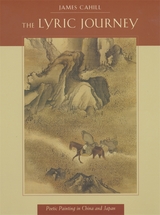 The Lyric Journey: Poetic Painting in China and Japan
James Cahill
Harvard University Press, 1996 Creating paintings with poetic resonances, sometimes with ties to specific lines of poetry, is a practice that began in China in the eleventh century, the Northern Sung period. James Cahill vividly surveys its first great flowering among artists working in the Southern Sung capital of Hangchou, probably the largest and certainly the richest city on earth in this era. He shows us the revival of poetic painting by late Ming artists working in the prosperous city of Suchou. And we learn how artists in Edo-period Japan, notably the eighteenth-century Nanga masters and the painter and haiku poet Yosa Buson, transformed the style into a uniquely Japanese vehicle of expression.
In all cases, Cahill shows, poetic painting flourished in crowded urban environments; it accompanied an outpouring of poetry celebrating the pastoral, escape from the city, immersion in nature. An ideal of the return to a life close to nature—the “lyric journey”—underlies many of the finest, most moving paintings of China and Japan, and offers a key for understanding them.
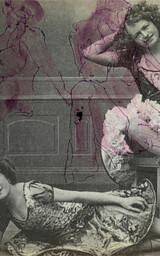 Lyric Novella
Annemarie Schwarzenbach
Seagull Books, 2011 Schwarzenbach’s clear, psychologically acute prose makes this novella an evocative narrative, with many intriguing parallels to her own life.
Annemarie Schwarzenbach—journalist, novelist, antifascist, archaeologist, and traveler—has become a European cult figure for bohemian free spirits since the rediscovery of her works in the late 1980s. Lyric Novella is her story of a young man’s obsession with a Berlin variété actress. Despite having his future career mapped out for him in the diplomatic service, the young man begins to question all his family values under Sibylle’s spell. His family, future, and social standing become irrelevant when set against his overriding compulsion to pick her up every night from the theater so they can go for a drive. Bringing the story back to her own life, Schwarzenbach admitted after publication that her hero was in fact a young woman, not a man, leaving little doubt that Lyric Novella is a literary tale of lesbian love during socially and politically turbulent times.
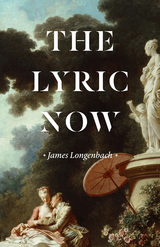 The Lyric Now
James Longenbach
University of Chicago Press, 2020 For more than a century, American poets have heeded the siren song of Ezra Pound’s make it new, staking a claim for the next poem on the supposed obsolescence of the last. But great poems are forever rehearsing their own present, inviting readers into a nowness that makes itself new each time we read or reread them. They create the present moment as we enter it, their language relying on the long history of lyric poetry while at the same time creating a feeling of unprecedented experience.
In poet and critic James Longenbach’s title, the word “now” does double duty, evoking both a lyric sense of the present and twentieth-century writers’ assertion of “nowness” as they crafted their poetry in the wake of Modernism. Longenbach examines the fruitfulness of poetic repetition and indecision, of naming and renaming, and of the evolving search for newness in the construction, history, and life of lyrics. Looking to the work of thirteen poets, from Marianne Moore and T. S. Eliot through George Oppen and Jorie Graham to Carl Phillips and Sally Keith, and several musicians, including Virgil Thomson and Patti Smith, he shows how immediacy is constructed through language. Longenbach also considers the life and times of these poets, taking a close look at the syntax and diction of poetry, and offers an original look at the nowness of lyrics.
 Lyric Personhood: On the Aesthetics of Being Someone in the West
Dan Wang
University of Chicago Press, 2025 A new theory of personhood makes the case that a “person” has always been an aesthetic category, not just a legal, political, or moral one.
What does it mean to be a person? One might think of the possession of certain rights, having the capacity for love, or being self-determined. But if words like “person” or “love” seem to carry an internal meaning, where does this meaningfulness come from? Lyric Personhood contends that to be encultured in the modern West is to learn, on top of everything else, an unspoken and mostly felt sense of what it means to be someone, a sense transmitted not only in language but also through encounters with aesthetic form. Through close readings that span nineteenth-century European opera, commercial cinema, and amateur YouTube proposal videos, Dan Wang shows that a “person” has become an aesthetic concept—and not just a legal, moral, political, or philosophical one—in the last two hundred years of Western culture.
It’s hard to let go of the organizing promise of romantic love, the dream of therapeutic “health,” and the aspiration to belong to national culture, Wang argues, because these longings have been shaped by an archive of sentimental and melodramatic works that trains people's expectations for life, genre, and even the knowing promised in theory itself. Tracing a surprisingly continuous imagination of personhood through opera and film aesthetics, Lyric Personhood introduces modes of reading audiovisual works that allow a longer story to be told about the forms that make personhood sensible in the West.
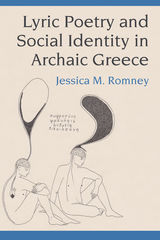 Lyric Poetry and Social Identity in Archaic Greece
Jessica M. Romney
University of Michigan Press, 2020 Lyric Poetry and Social Identity in Archaic Greece examines how Greek men presented themselves and their social groups to one another. The author examines identity rhetoric in sympotic lyric: how Greek poets constructed images of self for their groups, focusing in turn on the construction of identity in martial-themed poetry, the protection of group identities in the face of political exile, and the negotiation between individual and group as seen in political lyric. By conducting a close reading of six poems and then a broad survey of martial lyric, exile poetry, political lyric, and sympotic lyric as a whole, Jessica Romney demonstrates that sympotic lyric focuses on the same basic behaviors and values to construct social identities regardless of the content or subgenre of the poems in question. The volume also argues that the performance of identity depends on the context as well as the material of performance. Furthermore, the book demonstrates that sympotic lyric overwhelmingly prefers to use identity rhetoric that insists on the inherent sameness of group members.
All non-English text and quotes are translated, with the original languages given alongside the translation or in the endnotes.
Lyric Poetry. Etna
Pietro BemboEdited and translated by Mary P. Chatfield
Harvard University Press, 2005 Pietro Bembo (1470-1547), scholar and critic, was one of the most admired Latinists of his day. After some years at the court of Urbino, where he exchanged Platonic love letters with Lucrezia Borgia, he moved to Rome and served as secretary to Leo X (1513-1520). Later he retired to Padua and a life of letters. He was made a cardinal in 1539. The poems in this volume come from all periods of his life and reflect both his erudition and his wide-ranging friendships. This verse edition is the first time they have been translated into English.
This volume also includes the prose dialogue Etna, an account of Bembo's ascent of Mt. Etna in Sicily during his student days, translated by Betty Radice.
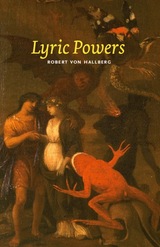 Lyric Powers
Robert von Hallberg
University of Chicago Press, 2008 The authority of poetry varies from one period to another, from one culture to another. For Robert von Hallberg, the authority of lyric poetry has three sources: religious affirmation, the social institutions of those who speak the idioms from which particular poems are made, and the extraordinary cognition generated by the formal and musical resources of poems. Lyric Powers helps students, poets, and general readers to recognize the pleasures and understand the ambitions of lyric poetry.
To explain why a reader might prefer one kind of poem to another, von Hallberg analyzes—beyond the political and intellectual significance of poems—the musicality of both lyric poetry and popular song, including that of Tin Pan Alley and doo-wop. He shows that poets have distinctive intellectual resources—not just rhetorical resources—for examining their subjects, and that the power of poetic language to generalize, not particularize, is what justly deserves a critic’s attention.
The first book in more than a decade from this respected critic, Lyric Powers will be celebrated as a genuine event by readers of poetry and literary criticism.
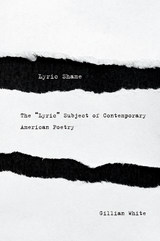 Lyric Shame: The “Lyric” Subject of Contemporary American Poetry
Gillian White
Harvard University Press, 2014 Bringing a provocative perspective to the poetry wars that have divided practitioners and critics for decades, Gillian White argues that the sharp disagreements surrounding contemporary poetics have been shaped by “lyric shame”—an unspoken but pervasive embarrassment over what poetry is, should be, and fails to be.
Favored particularly by modern American poets, lyric poetry has long been considered an expression of the writer’s innermost thoughts and feelings. But by the 1970s the “lyric I” had become persona non grata in literary circles. Poets and critics accused one another of “identifying” with lyric, which increasingly bore the stigma of egotism and political backwardness. In close readings of Elizabeth Bishop, Anne Sexton, Bernadette Mayer, James Tate, and others, White examines the social and critical dynamics by which certain poems become identified as “lyric,” arguing that the term refers less to a specific literary genre than to an abstract way of projecting subjectivity onto poems. Arguments about whether lyric poetry is deserving of praise or censure circle around what White calls “the missing lyric object”: an idealized poem that is nowhere and yet everywhere, and which is the product of reading practices that both the advocates and detractors of lyric impose on poems. Drawing on current trends in both affect and lyric theory, Lyric Shame unsettles the assumptions that inform much contemporary poetry criticism and explains why the emotional, confessional expressivity attributed to American lyric has become so controversial.
Lyric Trade: Reading the Subject in the Postwar Long Poem
Julia Bloch
University of Iowa Press, 2024 Sometimes the word “lyric” seems to appear everywhere: either it’s used interchangeably with the word “poetry” or it attaches to descriptions of literature, art, film, and even ordinary objects in order to capture some quality of aesthetic appeal or meaning. Lyric Trade is not yet another attempt to define the lyric, but instead it digs into how poems use lyric in relation to race, gender, nation, and empire.
Engaging with poets such as Gwendolyn Brooks, H.D., Lorine Niedecker, Alice Notley, and Myung Mi Kim, this book asks: What does lyric mean, and why should it matter to poets and readers? Lyric Trade argues that lyric in the postwar long poem not only registers the ideological contradictions of modernism’s insistence on new forms, but that it also maps spaces for formal reimaginings of the subject.
 Lyrical Experiments in Sinophone Verse: Time, Space, Bodies, and Things
Justyna Jaguscik
Amsterdam University Press, 2025 The 1919 May Fourth movement was the breeding ground for experiments by authors inspired by new world literary trends. Under Mao Zedong, folk songs accompanied political campaigns such as the Great Leap Forward. Misty Poetry of the 1980s contributed to the humanistic discourse of the post-Mao reform era. The most recent stage in Chinese poetry resonates with contemporary concerns, such as technological innovation, environmental degradation, socio-political transformations, and the return of geopolitical Cold War divisions. In search of creative responses to the crisis, poets frequently revisit the past while holding on to their poetic language of self-reflection and social critique. This volume identifies three foci in contemporary poetry discourses: formal crossovers, multiple realities, and liquid boundaries. These three themes often intersect within texts from mainland China, Hong Kong and Taiwan discussed in the book.
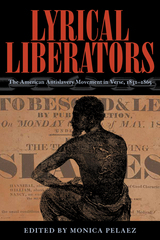 Lyrical Liberators: The American Antislavery Movement in Verse, 1831–1865
Monica Pelaez
Ohio University Press, 2018 Before Black Lives Matter and Hamilton, there were abolitionist poets, who put pen to paper during an era when speaking out against slavery could mean risking your life. Indeed, William Lloyd Garrison was dragged through the streets by a Boston mob before a planned lecture, and publisher Elijah P. Lovejoy was fatally shot while defending his press from rioters. Since poetry formed a part of the cultural, political, and emotional lives of readers, it held remarkable persuasive power. Yet antislavery poems have been less studied than the activist editorials and novels of the time. In Lyrical Liberators, Monica Pelaez draws on unprecedented archival research to recover these poems from the periodicals—Garrison’s Liberator, Frederick Douglass’s North Star, and six others—in which they originally appeared. The poems are arranged by theme over thirteen chapters, a number that represents the amendment that finally abolished slavery in 1865. The book collects and annotates works by critically acclaimed writers, commercially successful scribes, and minority voices including those of African Americans and women. There is no other book like this. Sweeping in scope and passionate in its execution, Lyrical Liberators is indispensable for scholars and teachers of American literature and history, and stands as a testimony to the power of a free press in the face of injustice.
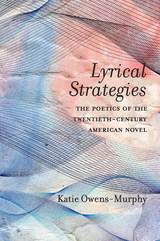 Lyrical Strategies: The Poetics of the Twentieth-Century American Novel
Katie Owens-Murphy
Northwestern University Press, 2018 Lyrical Strategies advances the highly original idea that not all literary fiction should be read as a novel. Instead, Katie Owens-Murphy identifies a prominent type of American novel well suited to the reading methods of lyric poetry and exhibiting lyric frameworks of structural repetition, rhythm, figurative meaning, dramatic personae, and exclusive address.
Owens-Murphy surveys a broad array of writers: poets from the lyrical transatlantic tradition, as well as American novelists including Gertrude Stein, Jean Toomer, William Faulkner, Toni Morrison, Louise Erdrich, and Cormac McCarthy. Through a masterful reexamination of canonical works of twentieth-century American fiction through the lens of lyric poetry, she reveals how many elements in these novels can be better understood as poetic and rhetorical figures (metaphysical conceit, polysyndeton, dramatic monologue, apostrophe, and so on) than as narrative ones.
Making fresh contributions to literary theory and American fiction, Lyrical Strategies will fascinate readers and scholars of the American novel, fiction, poetry, and poetics alike.
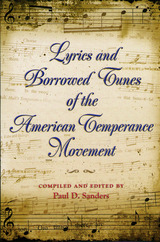 Lyrics and Borrowed Tunes of the American Temperance Movement
Edited & Compiled by Paul D. Sanders
University of Missouri Press, 2006
Cold water is the drink for me / Of all the drinks the best, sir; / Your grog, of whate’er name it be, / I dare not for to taste, sir.
Such a lyric, sung to the tune of “Yankee Doodle,” was typical ammunition in the temperance movement’s battle against alcohol. By the 1830s, Americans drank an average of 9.5 gallons of hard liquor each year. From the 1840s until the beginning of Prohibition, well over one hundred temperance songbooks were published in which inspirational lyrics were set to mostly borrowed tunes in the hope of persuading citizens to put down the bottle.
Despite the prominent place of music in the temperance movement, little has been written about the large volume of lyrics it produced. This book, the most extensive on the subject in nearly thirty years, presents more than four hundred of those lyrics and the thirty-two melodies most often employed, from “Auld Lang Syne” to “The Star-Spangled Banner.” Paul D. Sanders has assembled the various songs the movement used into five thematic chapters: patriotic songs, hymns, traditional Scottish songs, popular songs, and Civil War songs. In each, he offers an introductory commentary, provides the music for the original song to remind readers of the tune, and then presents the temperance versions chronologically with the lyricists’ names where known.
The songs reflect the efforts of the four major temperance organizations: the Washingtonians, the Independent Order of Good Templars, the Woman’s Christian Temperance Union, and the Anti-Saloon League. And although today’s image of temperance reformers is generally that of controlling puritans, these songs show that it was a multifaceted movement with a diverse influence on American society.
While many of these songs might seem naive or even comical to modern readers, temperance workers in their day understood that music was a powerful force that could be used to sway the masses. These crusaders were sincere in their wish to eradicate the alcohol problem. Sanders’s book is a lively collection, punctuated with temperance cartoons, that shows that these persuasive songs have stories to tell us today, bringing the evolution of the movement into clearer focus than ever before.
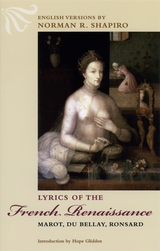 Lyrics of the French Renaissance: Marot, Du Bellay, Ronsard
Edited by Norman R. Shapiro
University of Chicago Press, 2006 Renowned translator Norman R. Shapiro here presents fresh English versions of poems by three of Western literature’s most gifted and prolific poets—the French Renaissance writers Clément Marot, Joachim Du Bellay, and Pierre de Ronsard. Writing in the rhymed and metered verse typical of the original French poems (which appear on facing pages), Shapiro skillfully adheres to their messages but avoids slavishly literal translations, instead offering creative and spirited equivalents.
Hope Glidden’s accessible introduction, along with the notes she and Shapiro provide on specific poems, will increase readers’ enjoyment and illuminate the historical and linguistic issues relating to this wealth of more than 150 lyric poems.
“A marvelous micro-anthology of sixteenth-century French letters. Representing the pinnacle of French Renaissance verse, the poems singled out here are sensitively interpreted in rhymed English versions. . . . There is a pleasant and inspiring craftsmanship in these interpretations.”—Virginia Quarterly Review
The Lysenko Affair
David Joravsky
University of Chicago Press, 1986 The Lysenko affair was perhaps the most bizarre chapter in the history of modern science. For thirty years, until 1965, Soviet genetics was dominated by a fanatical agronomist who achieved dictatorial power over genetics and plant science as well as agronomy.
"A standard source both for Soviet specialists and for sociologists of science."—American Journal of Sociology
"Joravsky has produced . . . the most detailed and authoritative treatment of Lysenko and his view on genetics."—New York Times Book Review
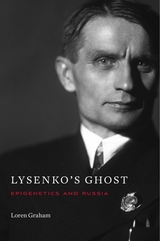 Lysenko’s Ghost: Epigenetics and Russia
Loren Graham
Harvard University Press, 2016 The Soviet agronomist Trofim Lysenko became one of the most notorious figures in twentieth-century science after his genetic theories were discredited decades ago. Yet some scientists, even in the West, now claim that discoveries in the field of epigenetics prove that he was right after all. Seeking to get to the bottom of Lysenko’s rehabilitation in certain Russian scientific circles, Loren Graham reopens the case, granting his theories an impartial hearing to determine whether new developments in molecular biology validate his claims.
In the 1930s Lysenko advanced a “theory of nutrients” to explain plant development, basing his insights on experiments which, he claimed, showed one could manipulate environmental conditions such as temperature to convert a winter wheat variety into a spring variety. He considered the inheritance of acquired characteristics—which he called the “internalization of environmental conditions”—the primary mechanism of heredity. Although his methods were slipshod and his results were never duplicated, his ideas fell on fertile ground during a time of widespread famine in the Soviet Union.
Recently, a hypothesis called epigenetic transgenerational inheritance has suggested that acquired characteristics may indeed occasionally be passed on to offspring. Some biologists dispute the evidence for this hypothesis. Loren Graham examines these arguments, both in Russia and the West, and shows how, in Russia, political currents are particularly significant in affecting the debates.
Lysias
Lysias
Harvard University Press Attic eloquence.
Lysias (ca. 458–ca. 380 BC), born at Athens, son of a wealthy Syracusan settled in Attica, lived in Piraeus, where with his brother he inherited his father’s shield factory. Being a loyal supporter of democracy, Lysias took the side of the democrats at Athens against the Thirty Tyrants in 404, supplying shields and money. After one political speech in accusation of Eratosthenes (one of the Thirty) in 405, he became at Athens a busy professional speech writer for the law courts. At the Olympic festival of 388 he denounced, with riotous results, the costly display of the embassy sent by Dionysius I of Syracuse and the domination of Sicily by Dionysius.
The surviving speeches of Lysias (about thirty complete out of a very much larger number) are fluent, simple, and graceful in style yet vivid in description. They suggest a passionate partisan who was also a gentle, humorous man. We see in him the art of oratory young and fresh.
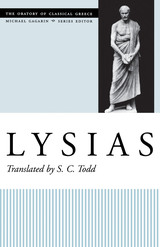 Lysias
By S. C. Todd
University of Texas Press, 2000 This is the second volume in the Oratory of Classical Greece series. Planned for publication over several years, the series will present all of the surviving speeches from the late fifth and fourth centuries B.C. in new translations prepared by classical scholars who are at the forefront of the discipline. These translations are especially designed for the needs and interests of today's undergraduates, Greekless scholars in other disciplines, and the general public. Classical oratory is an invaluable resource for the study of ancient Greek life and culture. The speeches offer evidence on Greek moral views, social and economic conditions, political and social ideology, and other aspects of Athenian culture that have been largely ignored: women and family life, slavery, and religion, to name just a few. This volume contains all the complete works and eleven of the largest fragments attributed to Lysias, the leading speechwriter of the generation (403-380 B.C.) after the Peloponnesian War, who was also one of the finest and most deceptive storytellers of all time. As a noncitizen resident in Athens, Lysias could take no direct part in politics, but his speeches, written for clients to deliver in court, paint vivid pictures of various private and public disputes: one speaker defends himself on a charge of murdering his wife's lover, while another is accused of having caused the deaths of democratic activists under the short-lived oligarchy of the Thirty (404/3), despite his claim to be protected by the amnesty that accompanied the restoration of democracy in 403.
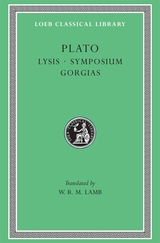 Lysis. Symposium. Gorgias
Plato
Harvard University Press Plato, the great philosopher of Athens, was born in 427 BCE. In early manhood an admirer of Socrates, he later founded the famous school of philosophy in the grove Academus. Much else recorded of his life is uncertain; that he left Athens for a time after Socrates' execution is probable; that later he went to Cyrene, Egypt, and Sicily is possible; that he was wealthy is likely; that he was critical of 'advanced' democracy is obvious. He lived to be 80 years old. Linguistic tests including those of computer science still try to establish the order of his extant philosophical dialogues, written in splendid prose and revealing Socrates' mind fused with Plato's thought.
In Laches, Charmides, and Lysis, Socrates and others discuss separate ethical conceptions. Protagoras, Ion, and Meno discuss whether righteousness can be taught. In Gorgias, Socrates is estranged from his city's thought, and his fate is impending. The Apology (not a dialogue), Crito, Euthyphro, and the unforgettable Phaedo relate the trial and death of Socrates and propound the immortality of the soul. In the famous Symposium and Phaedrus, written when Socrates was still alive, we find the origin and meaning of love. Cratylus discusses the nature of language. The great masterpiece in ten books, the Republic, concerns righteousness (and involves education, equality of the sexes, the structure of society, and abolition of slavery). Of the six so-called dialectical dialogues Euthydemus deals with philosophy; metaphysical Parmenides is about general concepts and absolute being; Theaetetus reasons about the theory of knowledge. Of its sequels, Sophist deals with not-being; Politicus with good and bad statesmanship and governments; Philebus with what is good. The Timaeus seeks the origin of the visible universe out of abstract geometrical elements. The unfinished Critias treats of lost Atlantis. Unfinished also is Plato's last work of the twelve books of Laws (Socrates is absent from it), a critical discussion of principles of law which Plato thought the Greeks might accept.
The Loeb Classical Library edition of Plato is in twelve volumes.
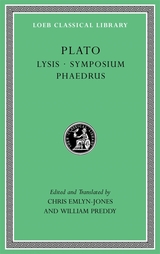 Lysis. Symposium. Phaedrus
Plato
Harvard University Press, 2022 Platonic forms of love.
Plato of Athens, who laid the foundations of the Western philosophical tradition and in range and depth ranks among its greatest practitioners, was born to a prosperous and politically active family circa 427 BC. In early life an admirer of Socrates, Plato later founded the first institution of higher learning in the West, the Academy, among whose many notable alumni was Aristotle. Traditionally ascribed to Plato are thirty-five dialogues developing Socrates’ dialectic method and composed with great stylistic virtuosity, together with the Apology and thirteen letters.
The three works in this volume, though written at different stages of Plato’s career, are set toward the end of Socrates’ life (from 416) and explore the relationship between two people known as love (erōs) or friendship (philia). In Lysis, Socrates meets two young men exercising in a wrestling school during a religious festival. In Symposium, Socrates attends a drinking party along with several accomplished friends to celebrate the young tragedian Agathon’s victory in the Lenaia festival of 416: the topic of conversation is love. And in Phaedrus, Socrates and his eponymous interlocutor escape the midsummer heat of the city to the banks of the river Ilissus, where speeches by both on the subject of love lead to a critical discussion of the current state of the theory and practice of rhetoric.
This edition, which replaces the original Loeb editions by Sir Walter R. M. Lamb and by Harold North Fowler, offers text, translation, and annotation that are fully current with modern scholarship.
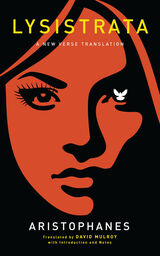 Lysistrata: A New Verse Translation
Aristophanes, Translated by David Mulroy, with Introduction and Notes
University of Wisconsin Press, 2020 Aristophanes, a native Athenian and the leading exponent of Greek comedy, was born c. 450 BCE. Today forty-three of his plays are known by title; eleven survive. The most famous of these is the whimsical fantasy Lysistrata.
A perennial classroom and stage favorite as well as the basis of Spike Lee’s Chi-Raq, the play is as relevant today as it was 2,500 years ago. The premise is simplicity itself: to end the Peloponnesian War, women decide to withhold sex from their husbands until the fighting stops.
The play is by turns raucous, bawdy, frantic, and funny. David Mulroy’s exciting new translation retains the original’s verse format, racy jokes, and vibrancy—setting it apart from previous efforts, which are typically reproduced as prose or depart from meaning and meter. His introduction offers a concise summary of Aristophanes’ life and social milieu, including a brief overview of the Peloponnesian War, which took place during the playwright’s lifetime. The appendices include guides on translating meter and Greek pronunciation for aspiring thespians.
|
|
